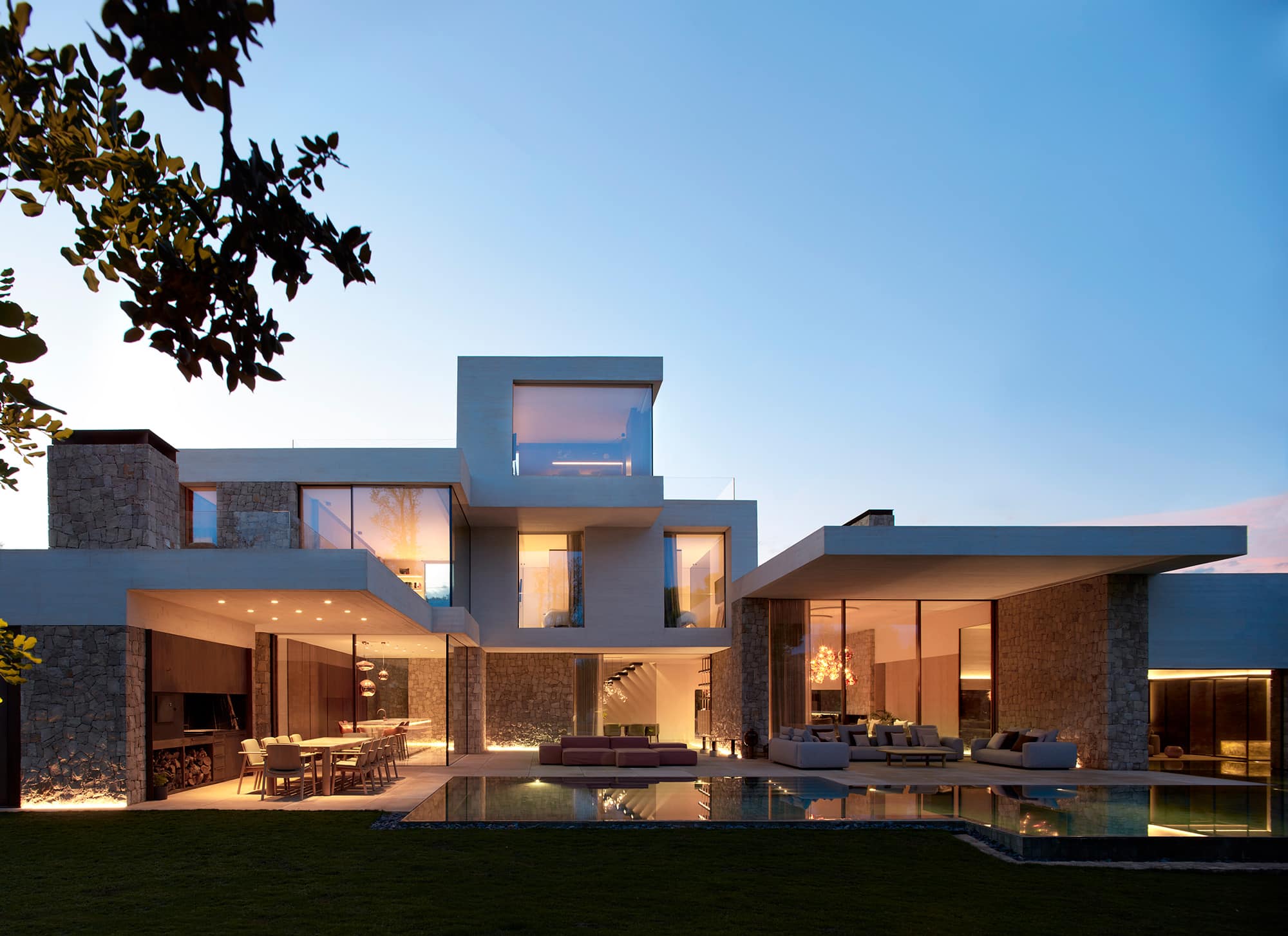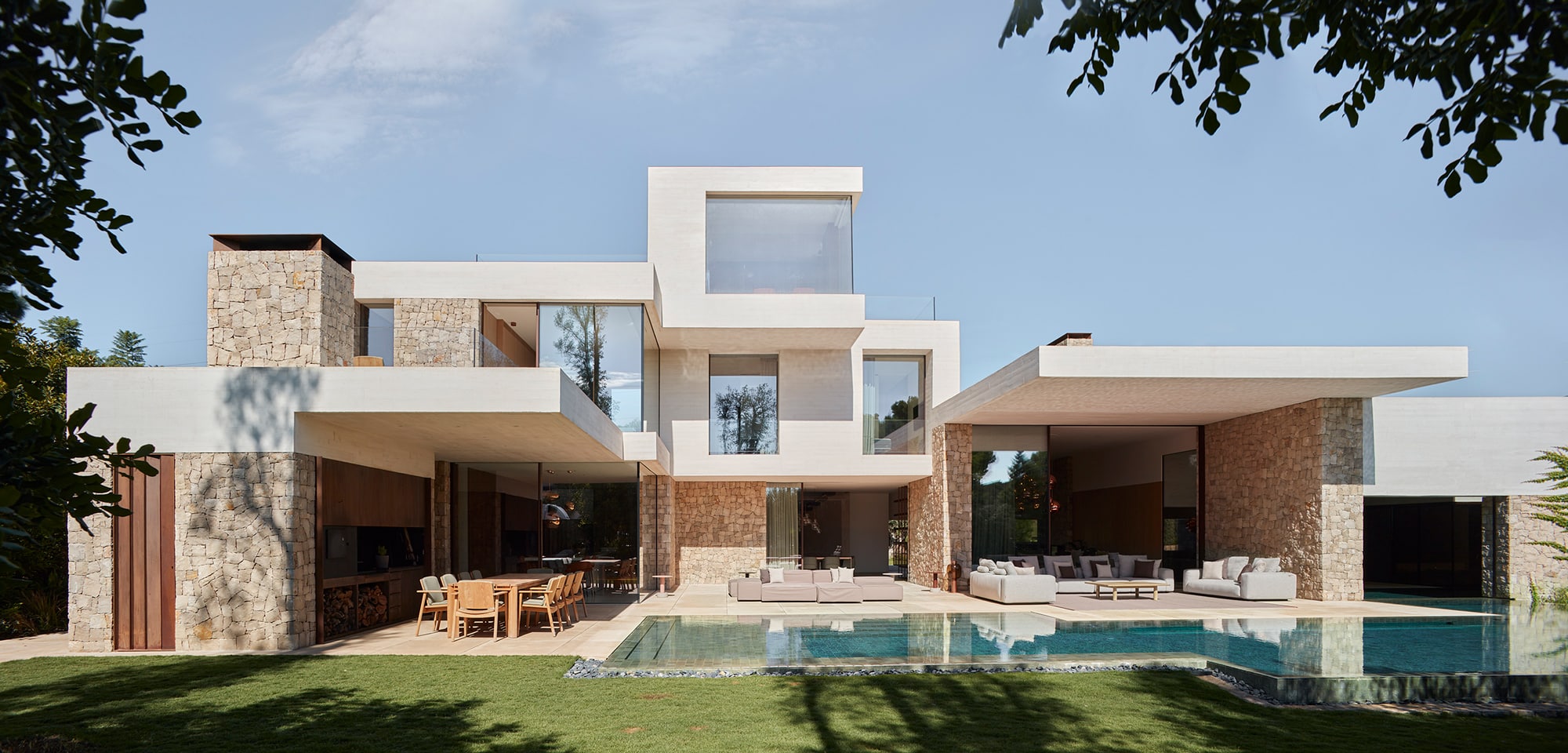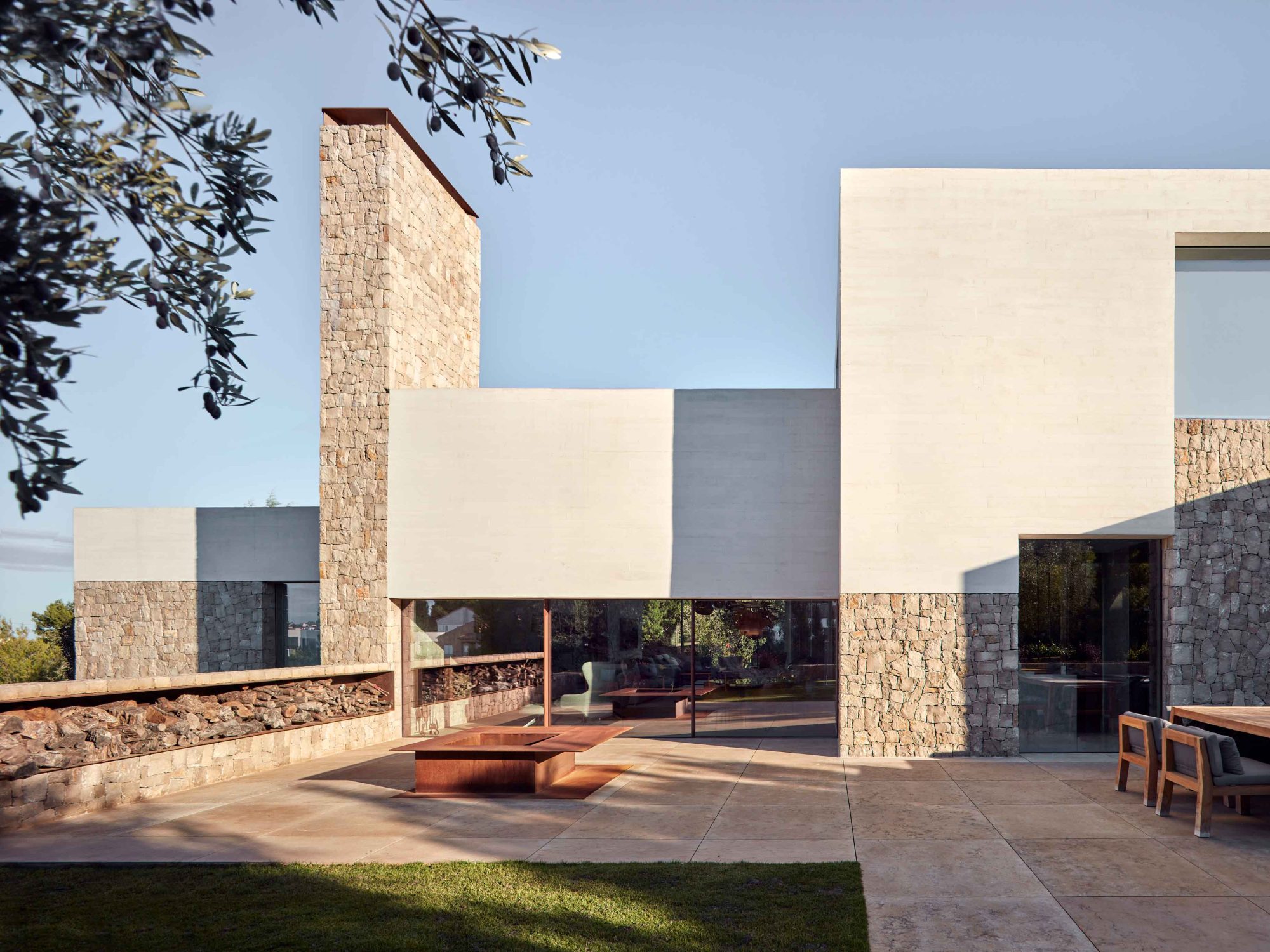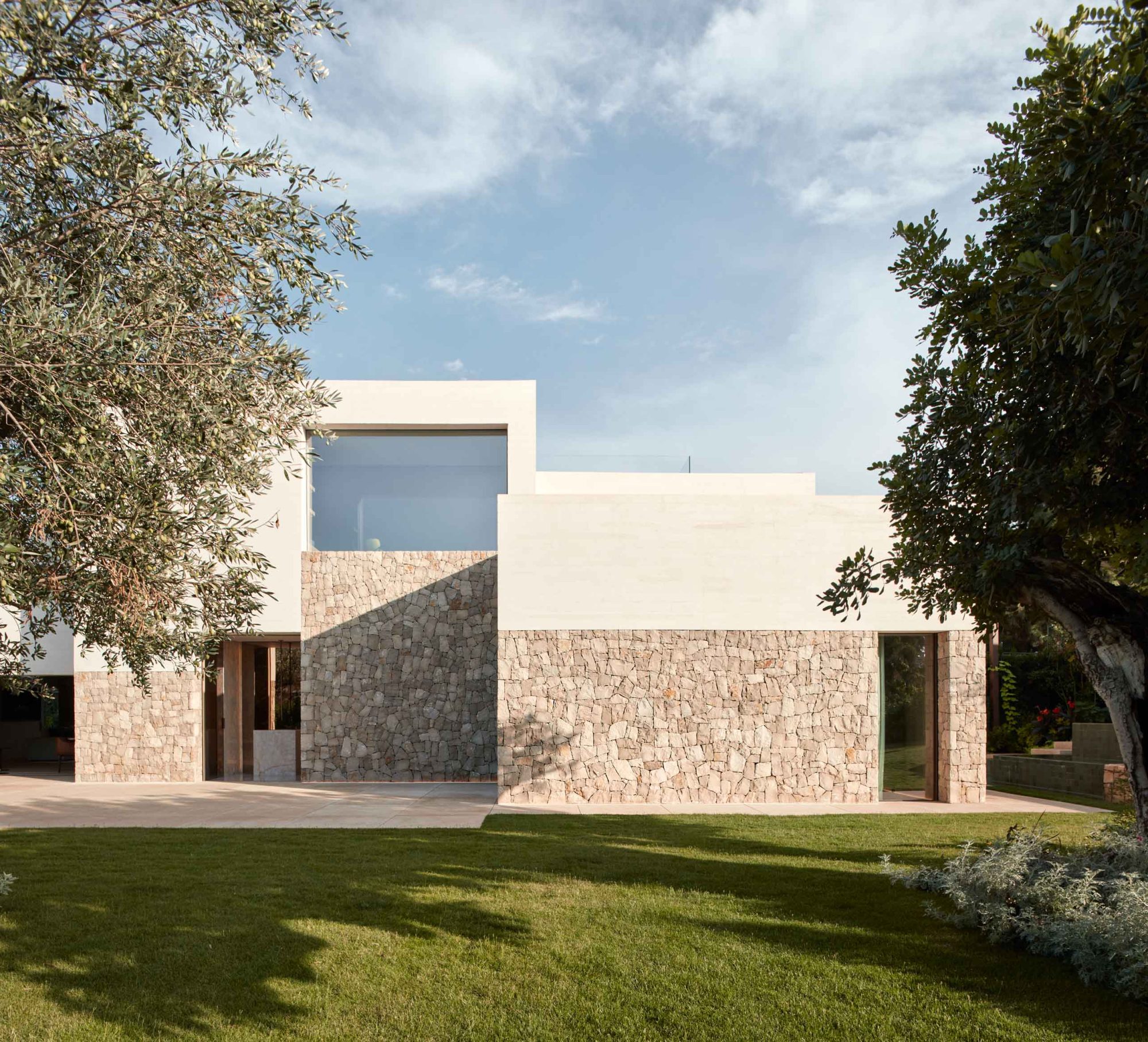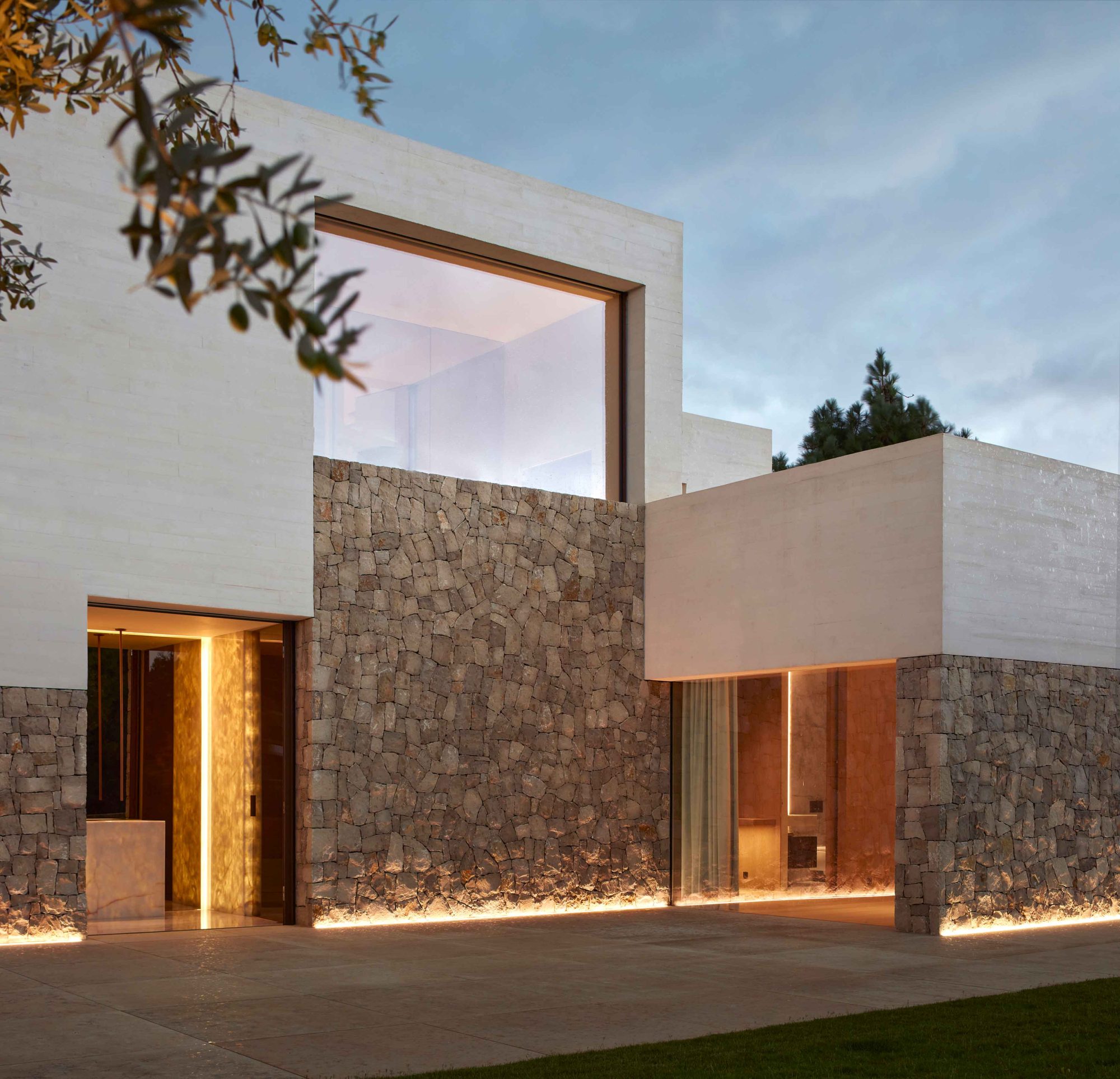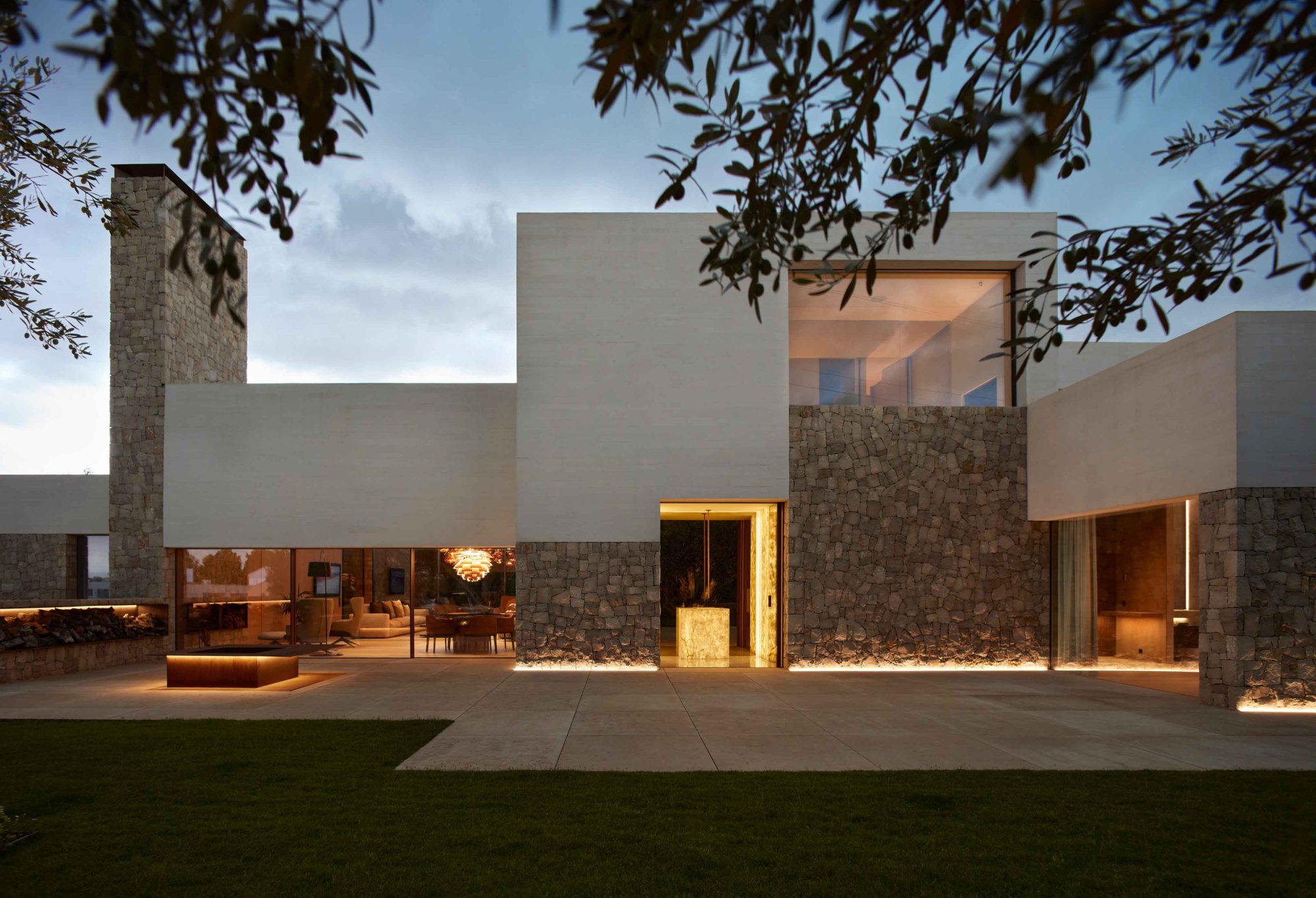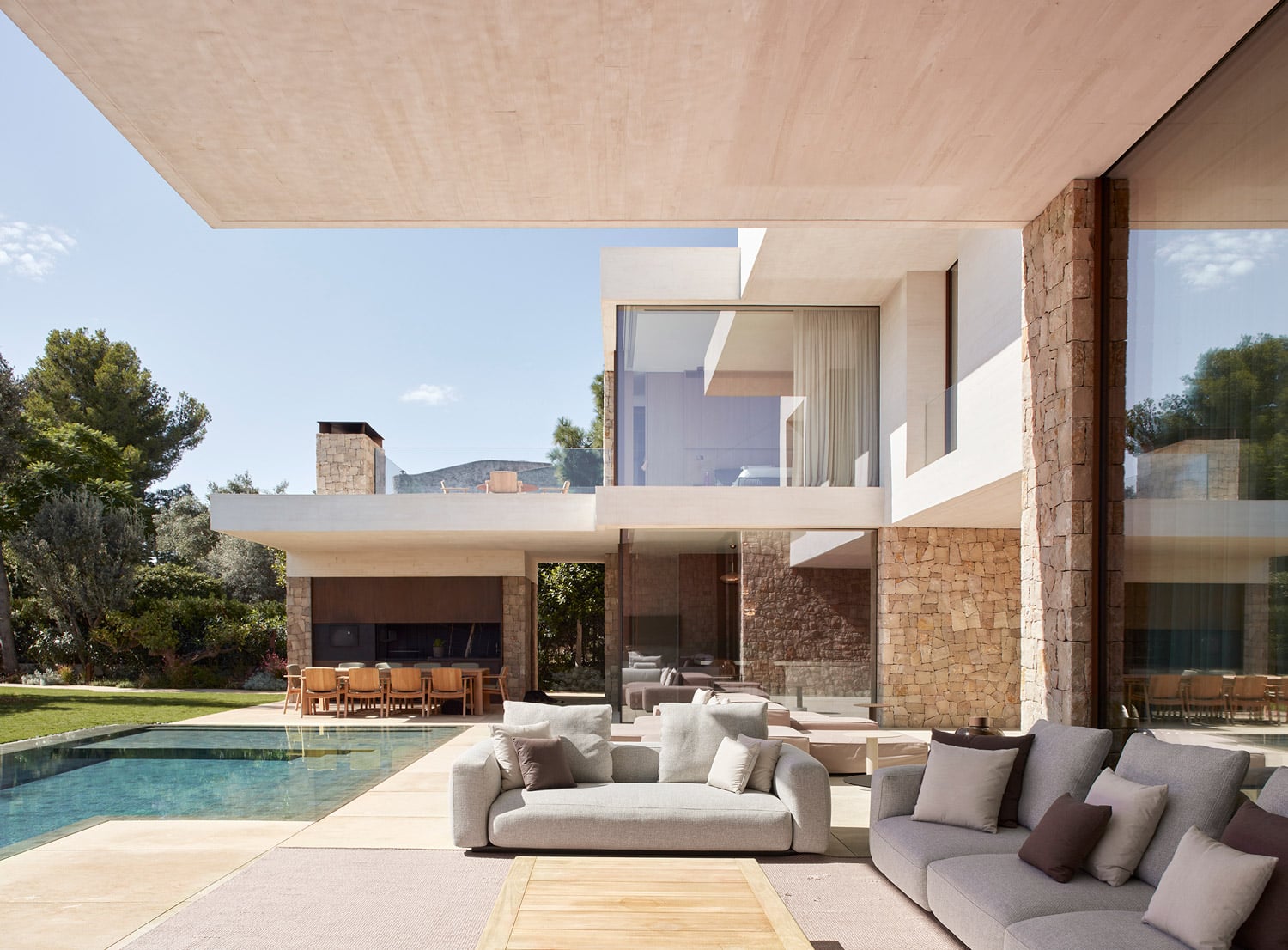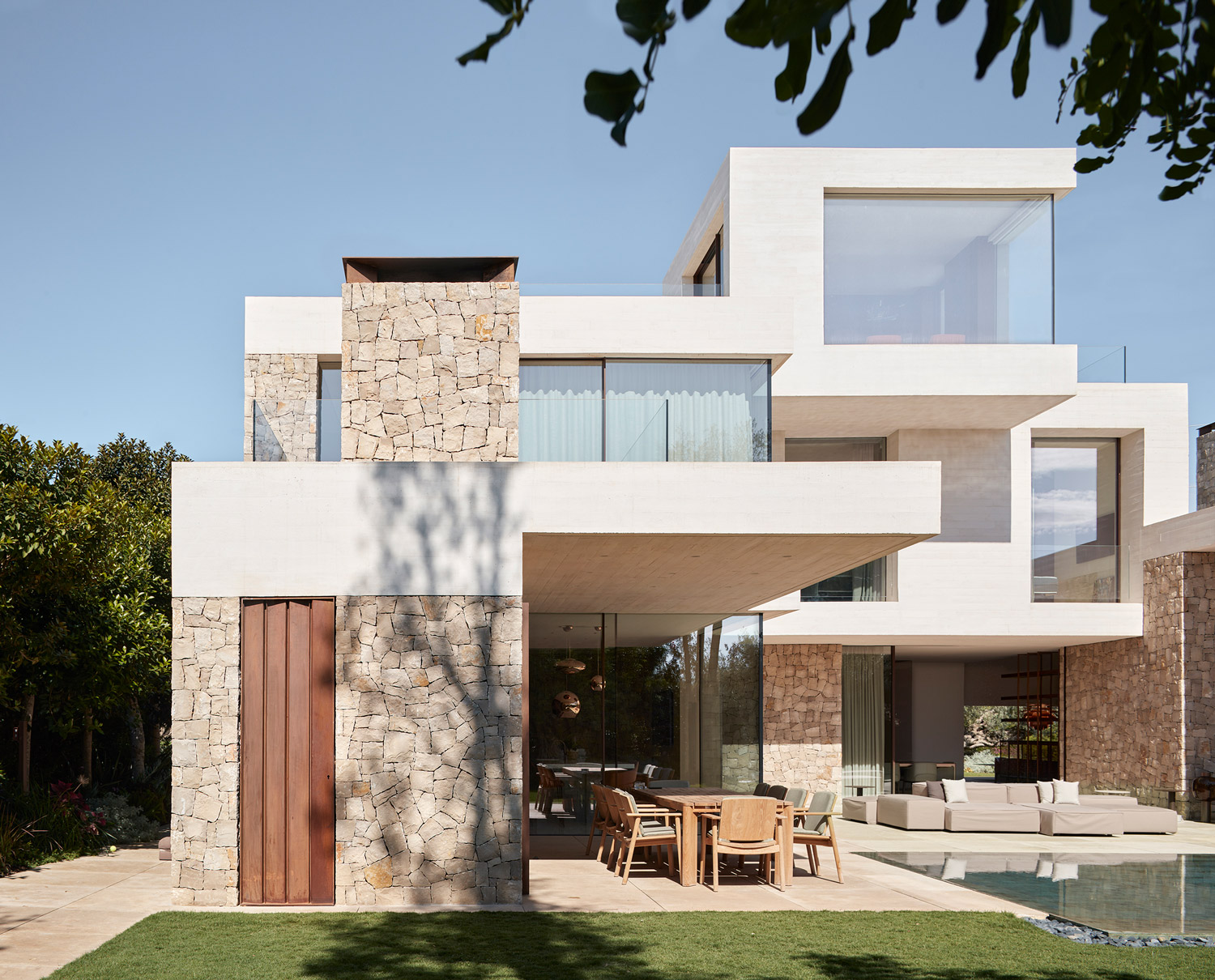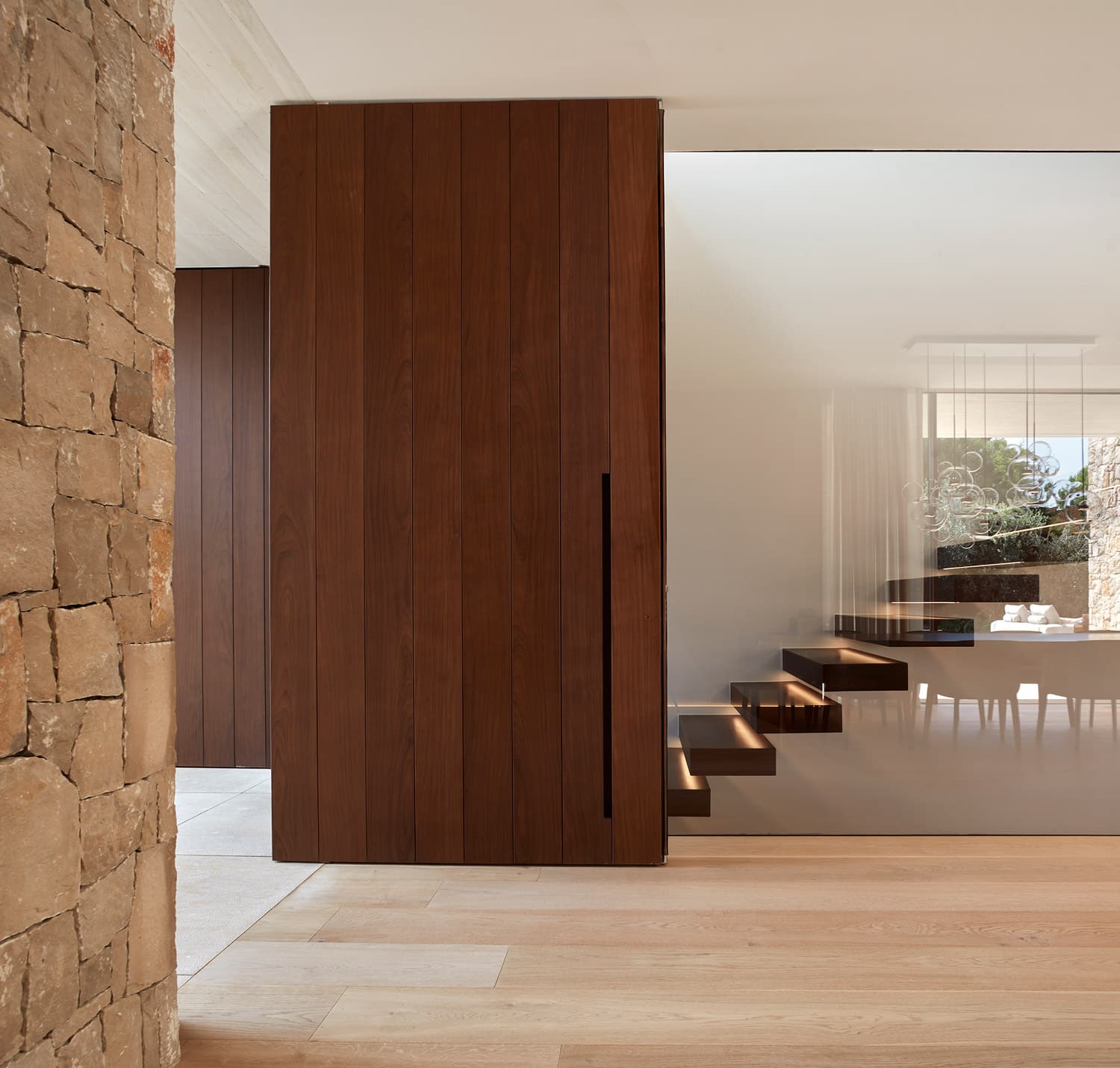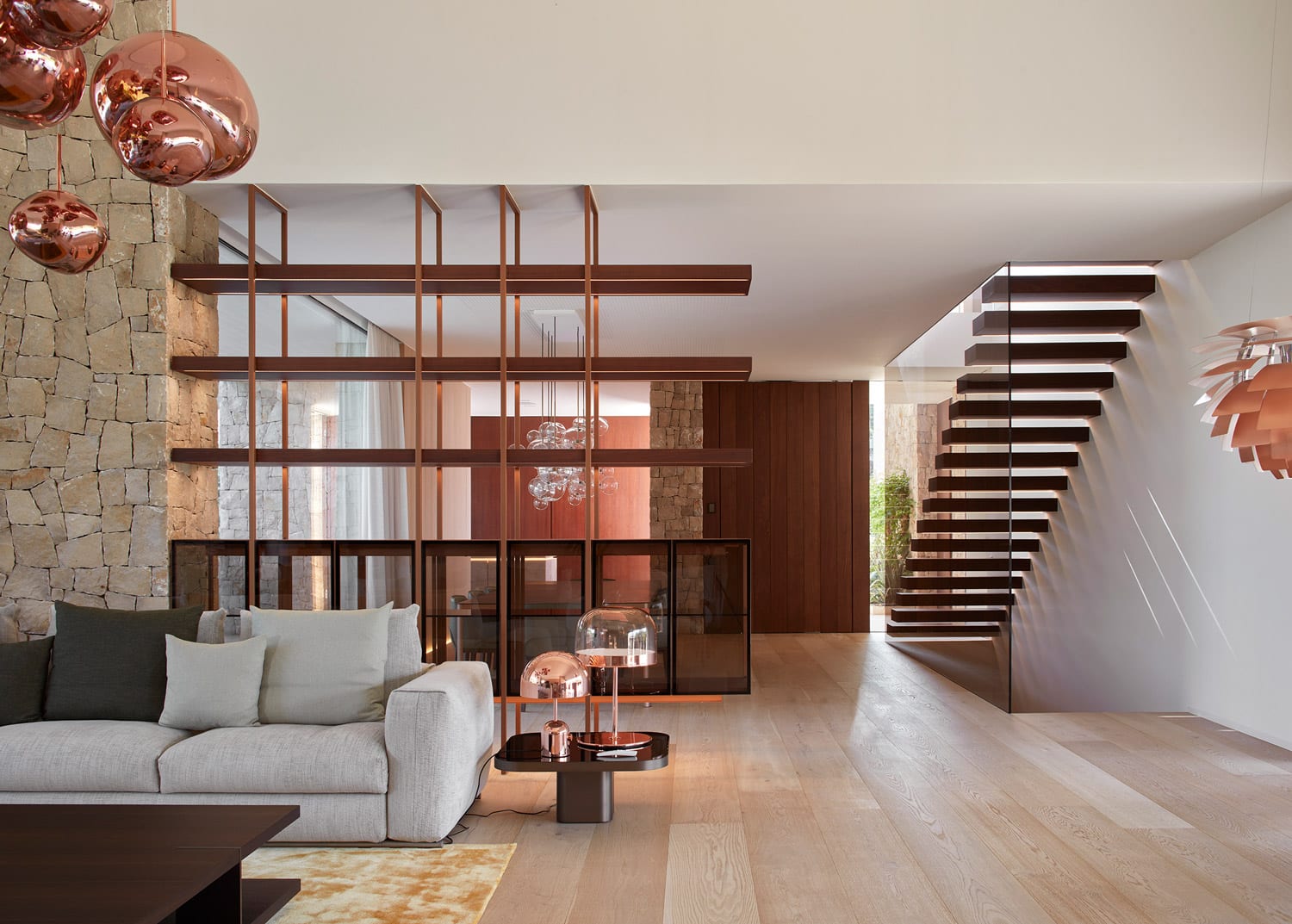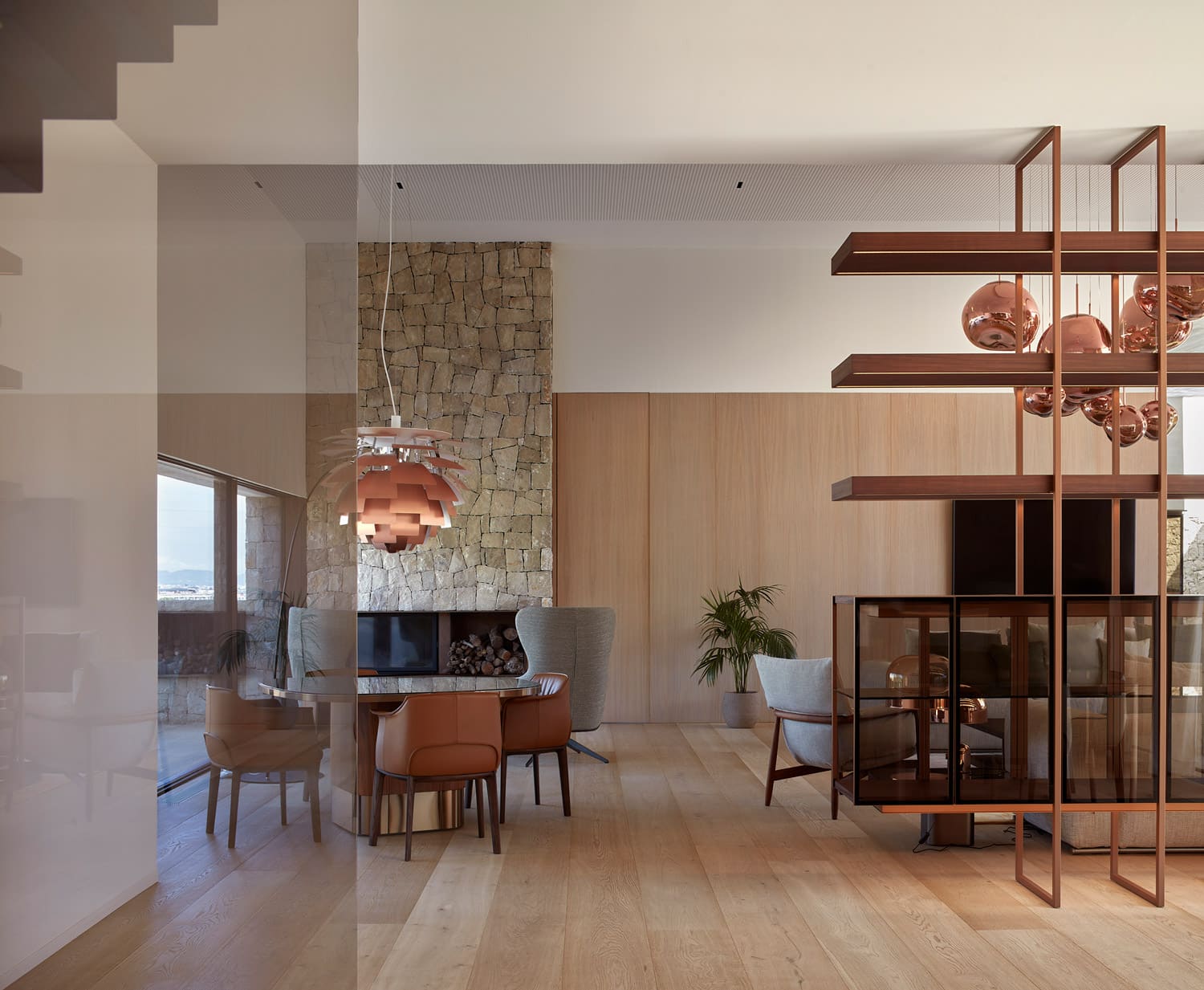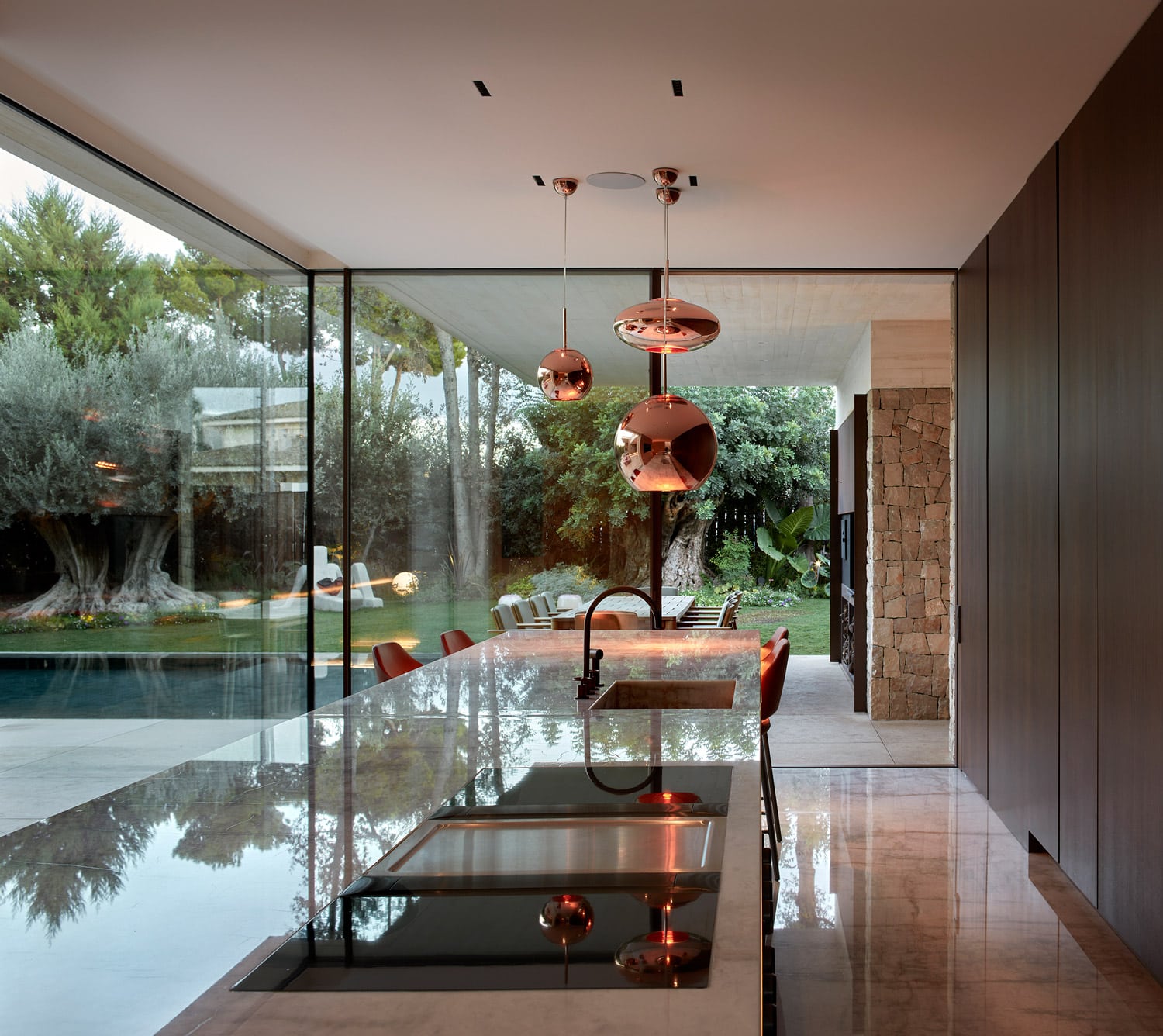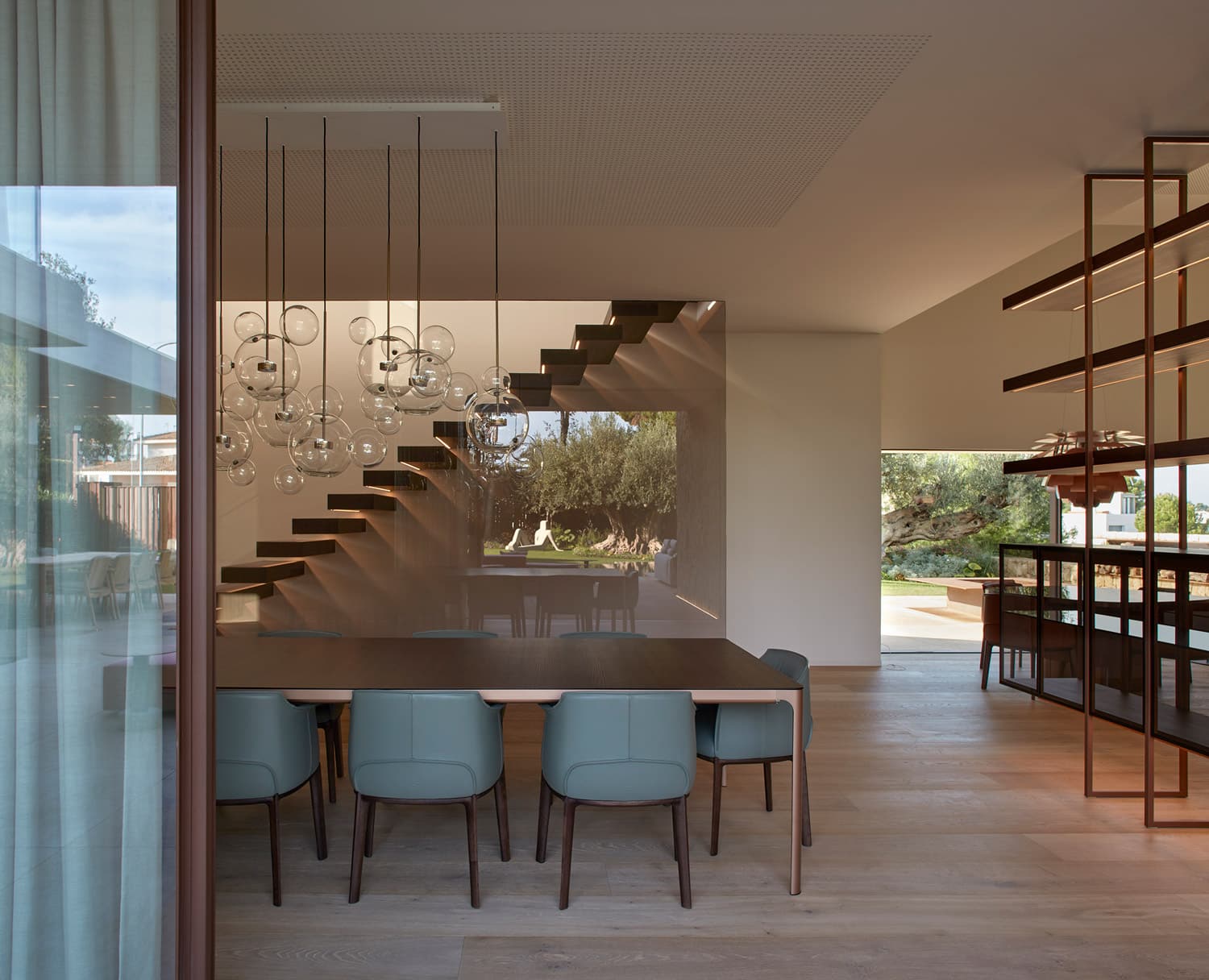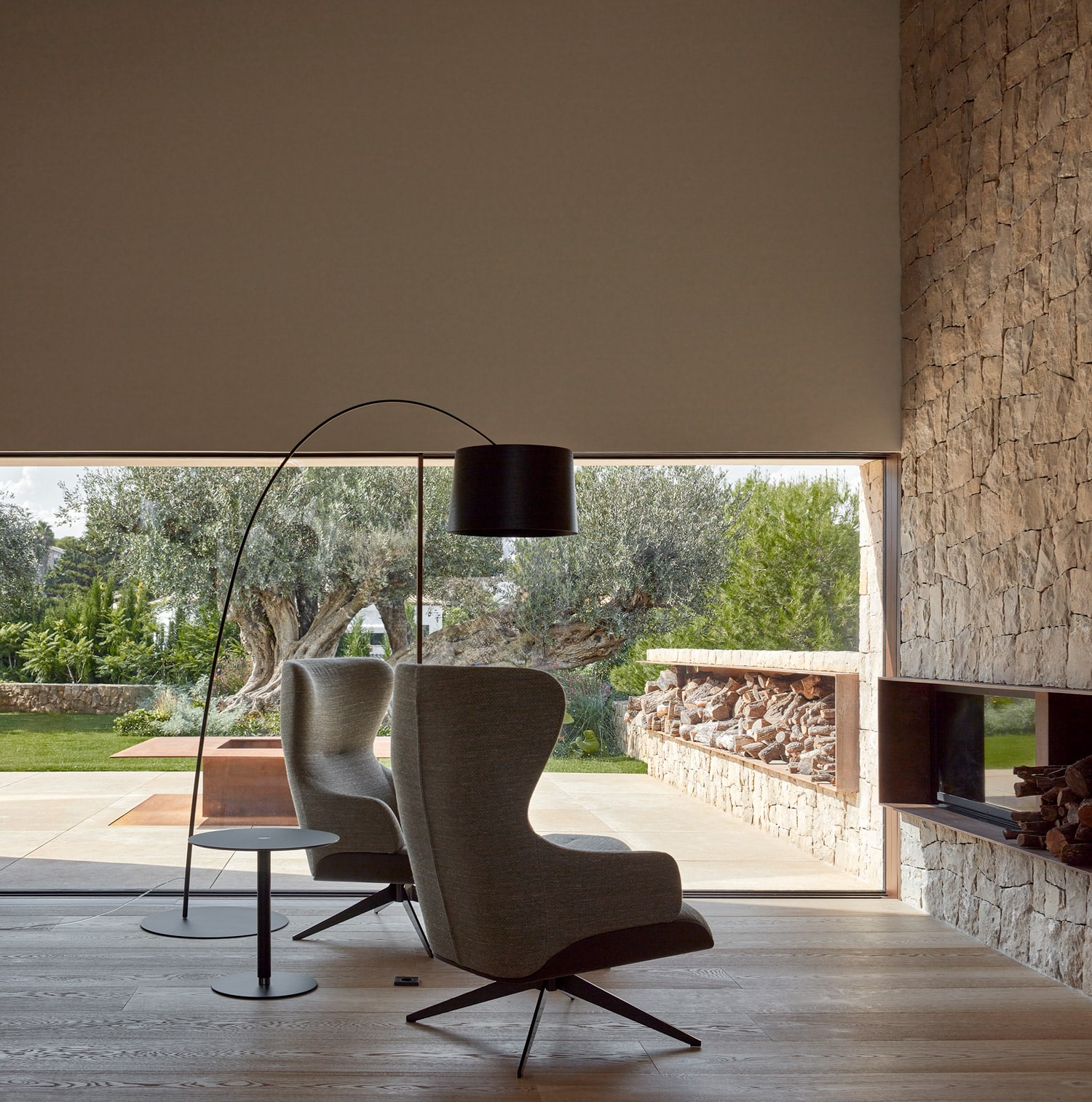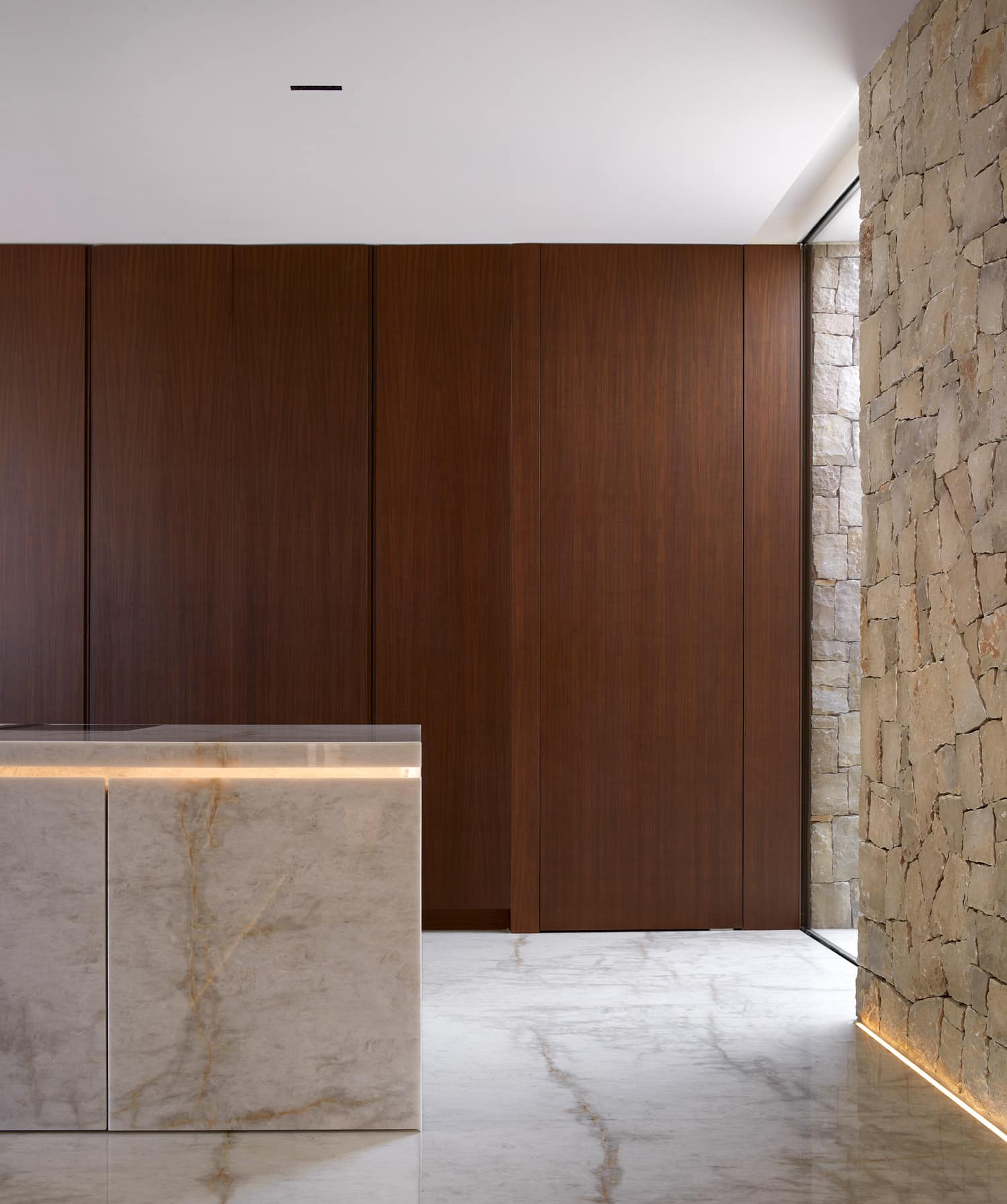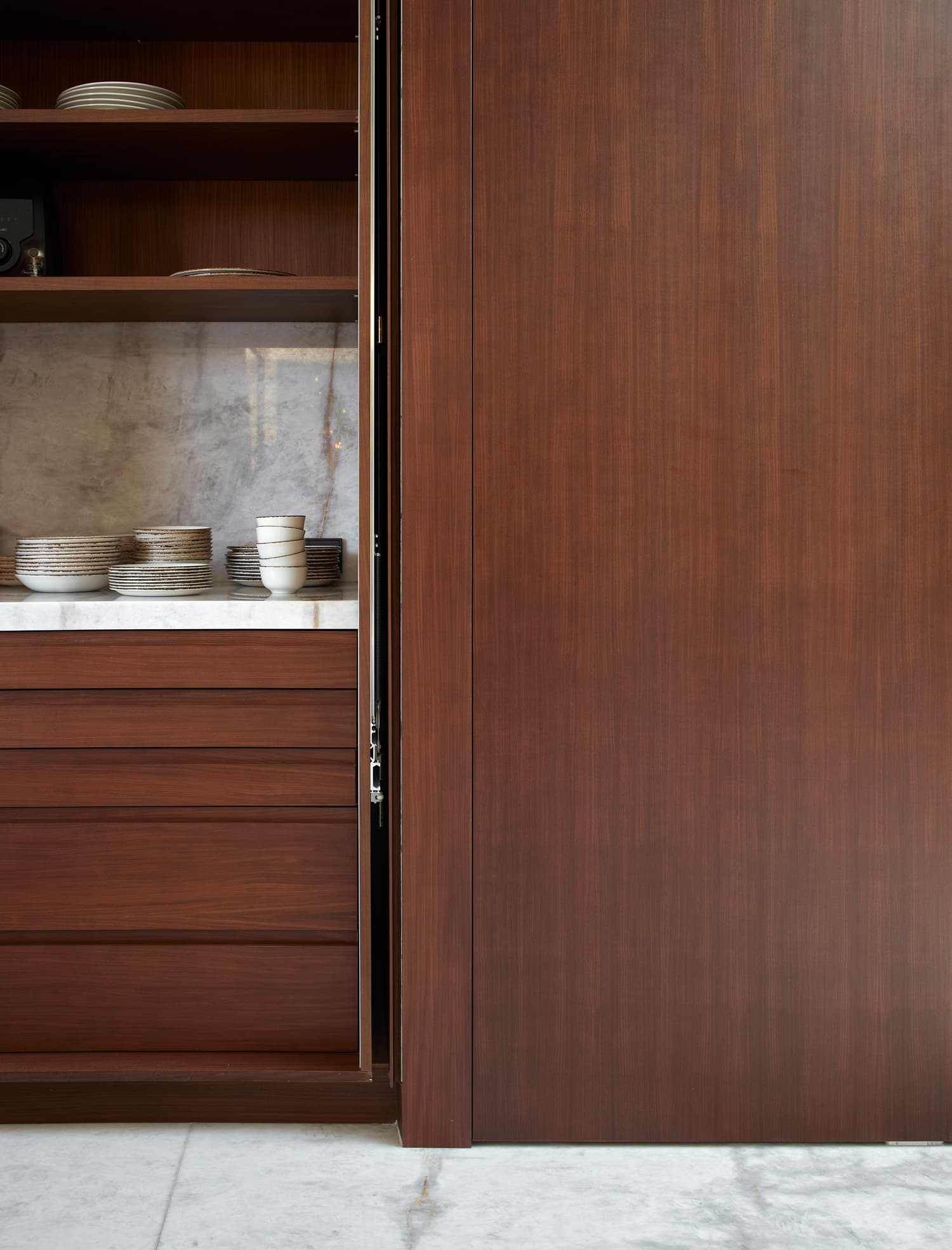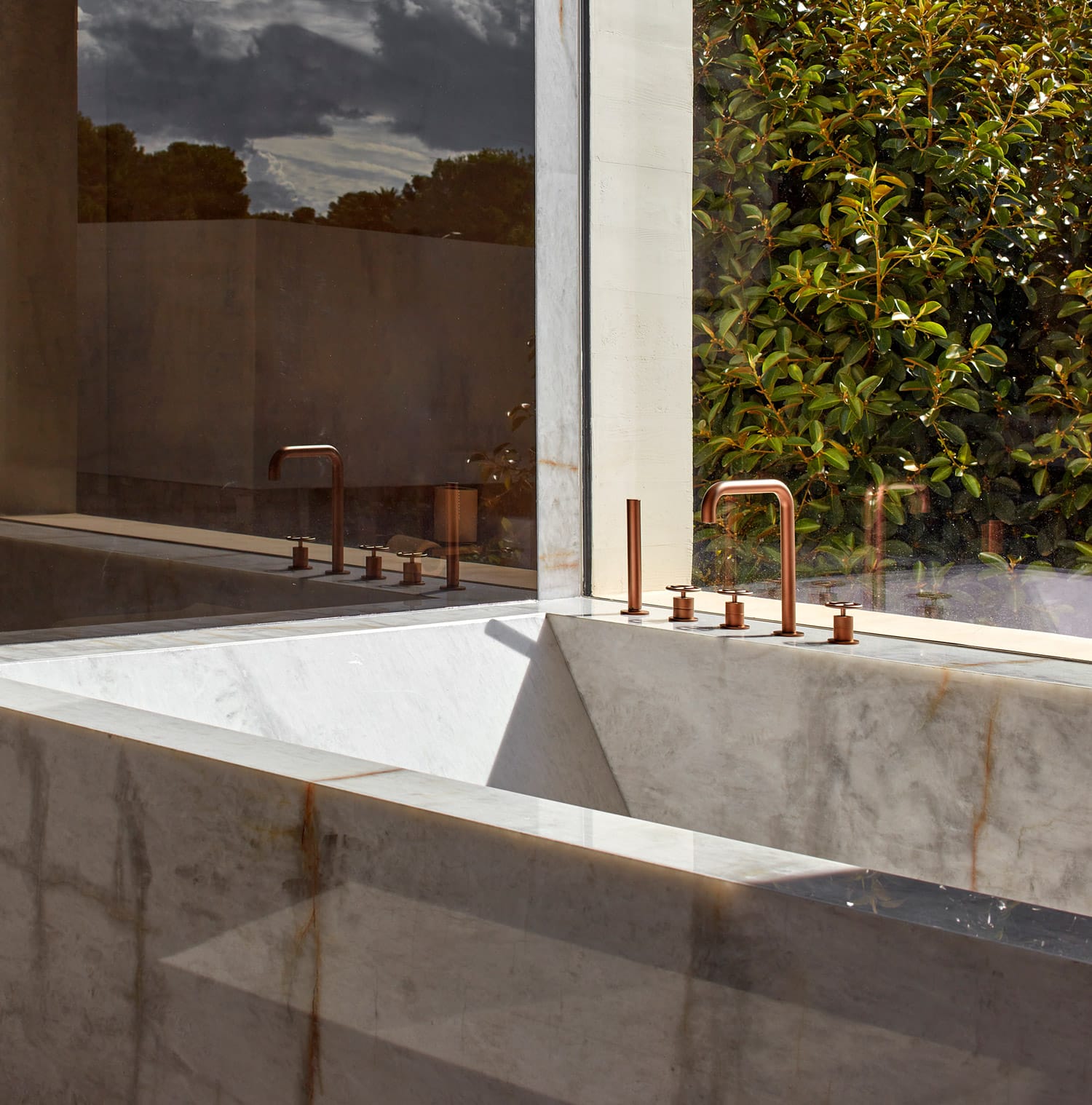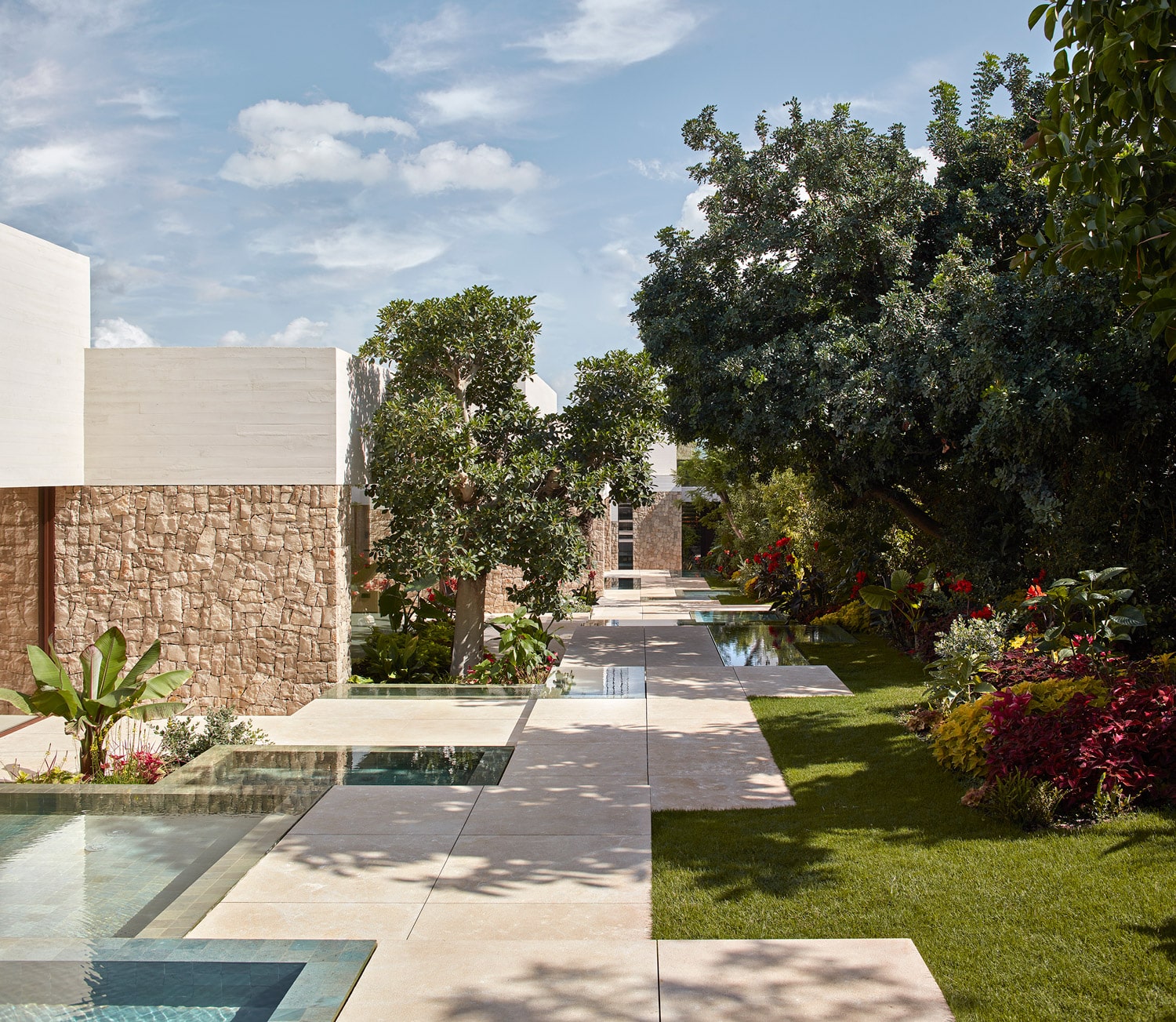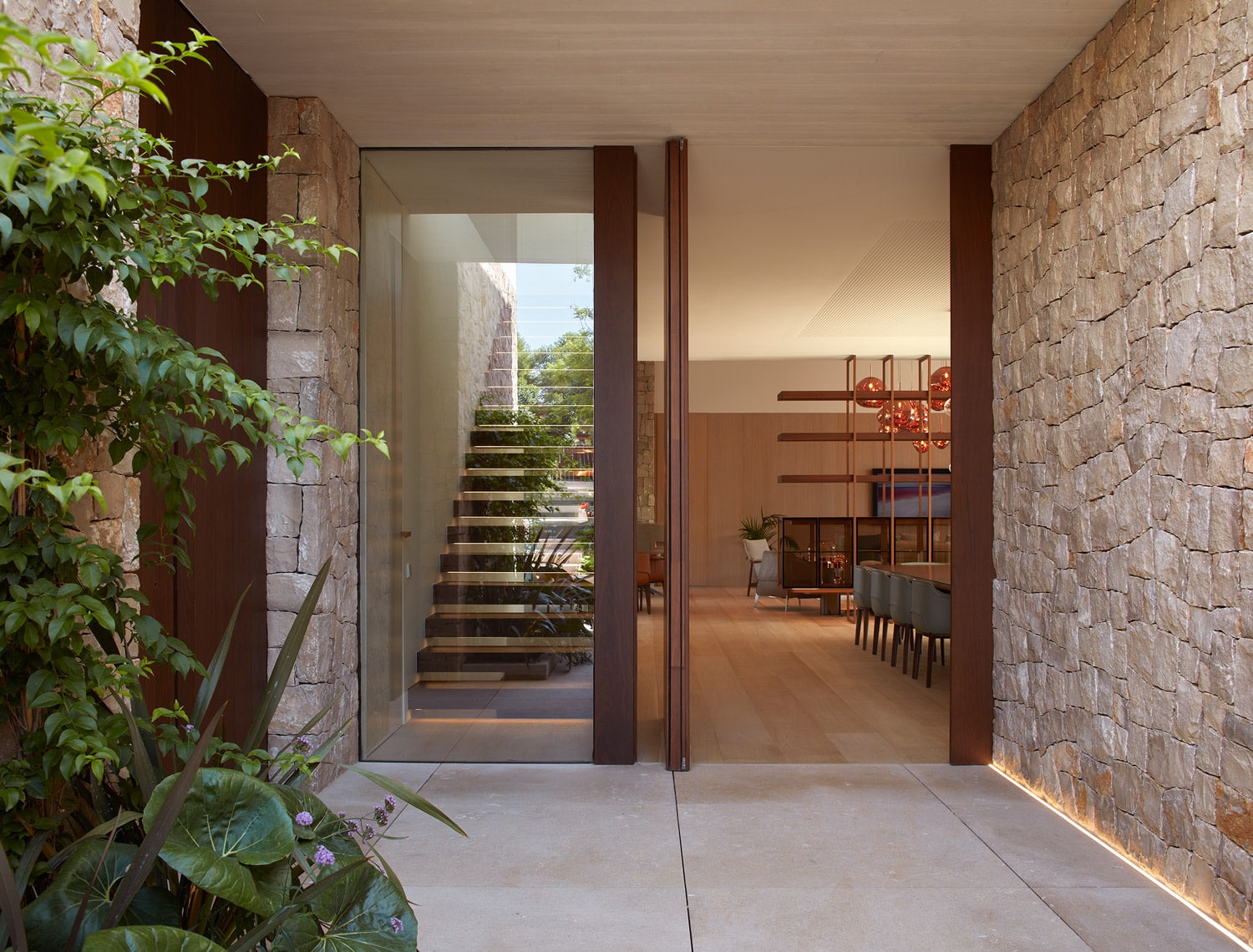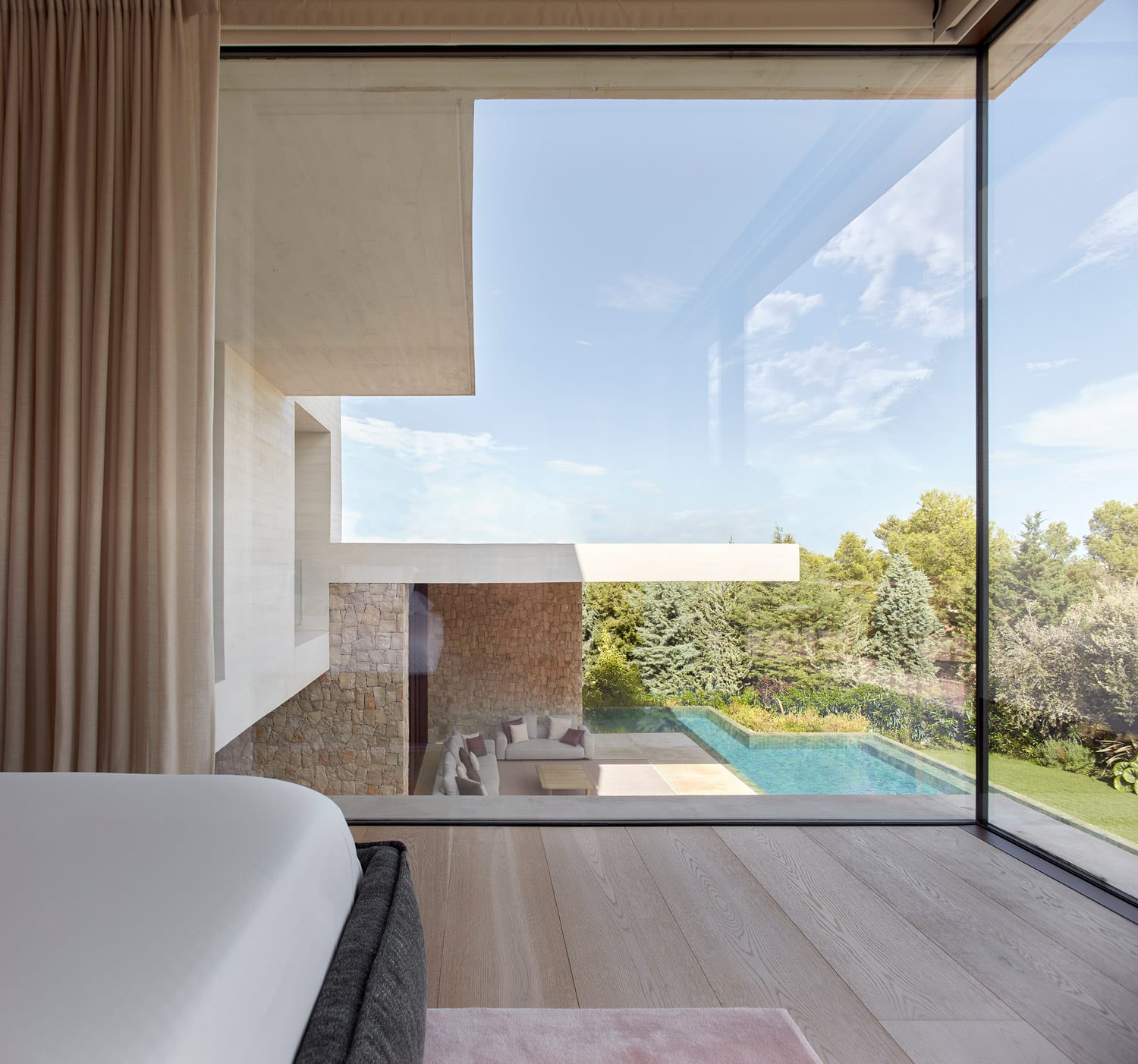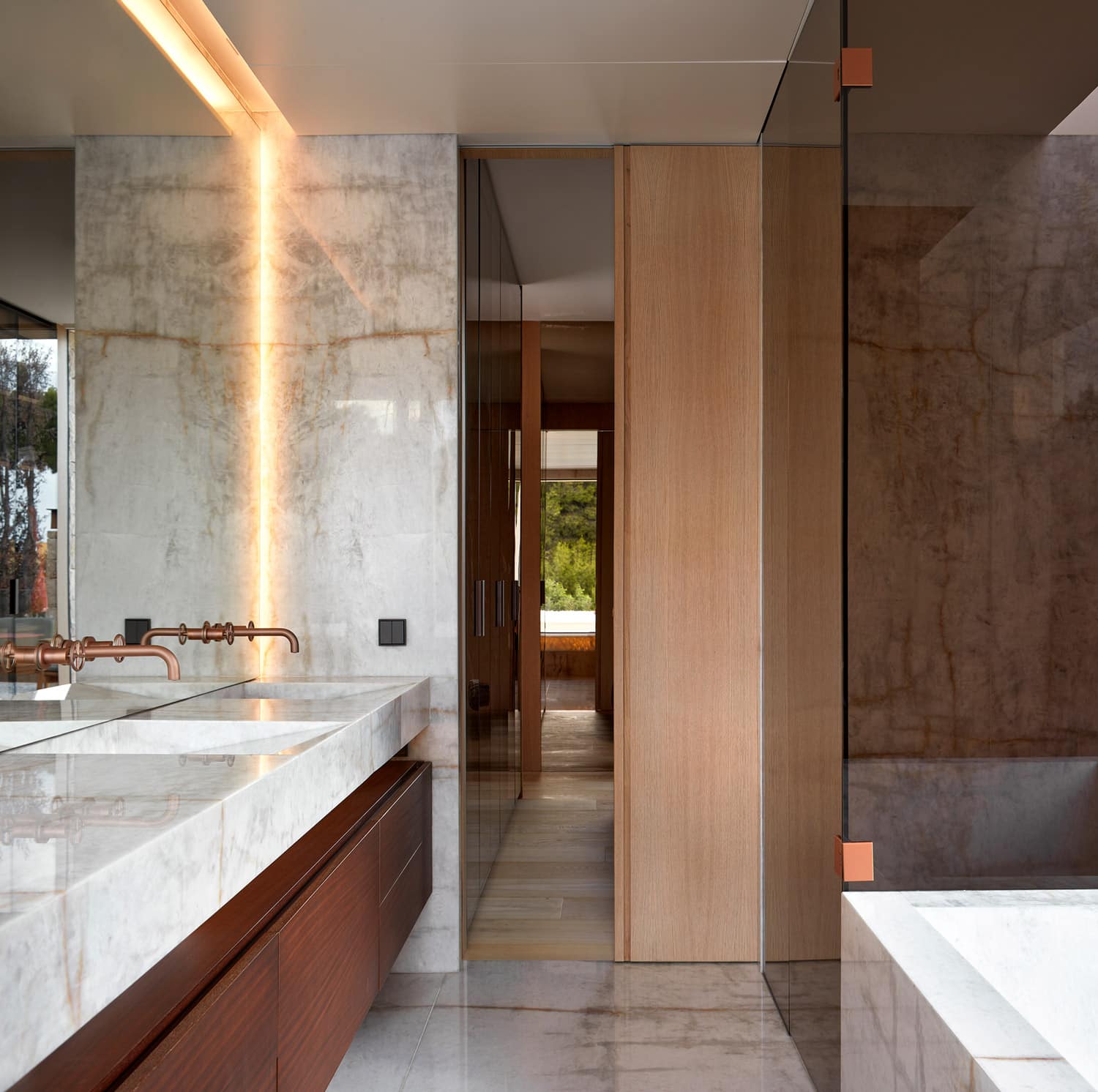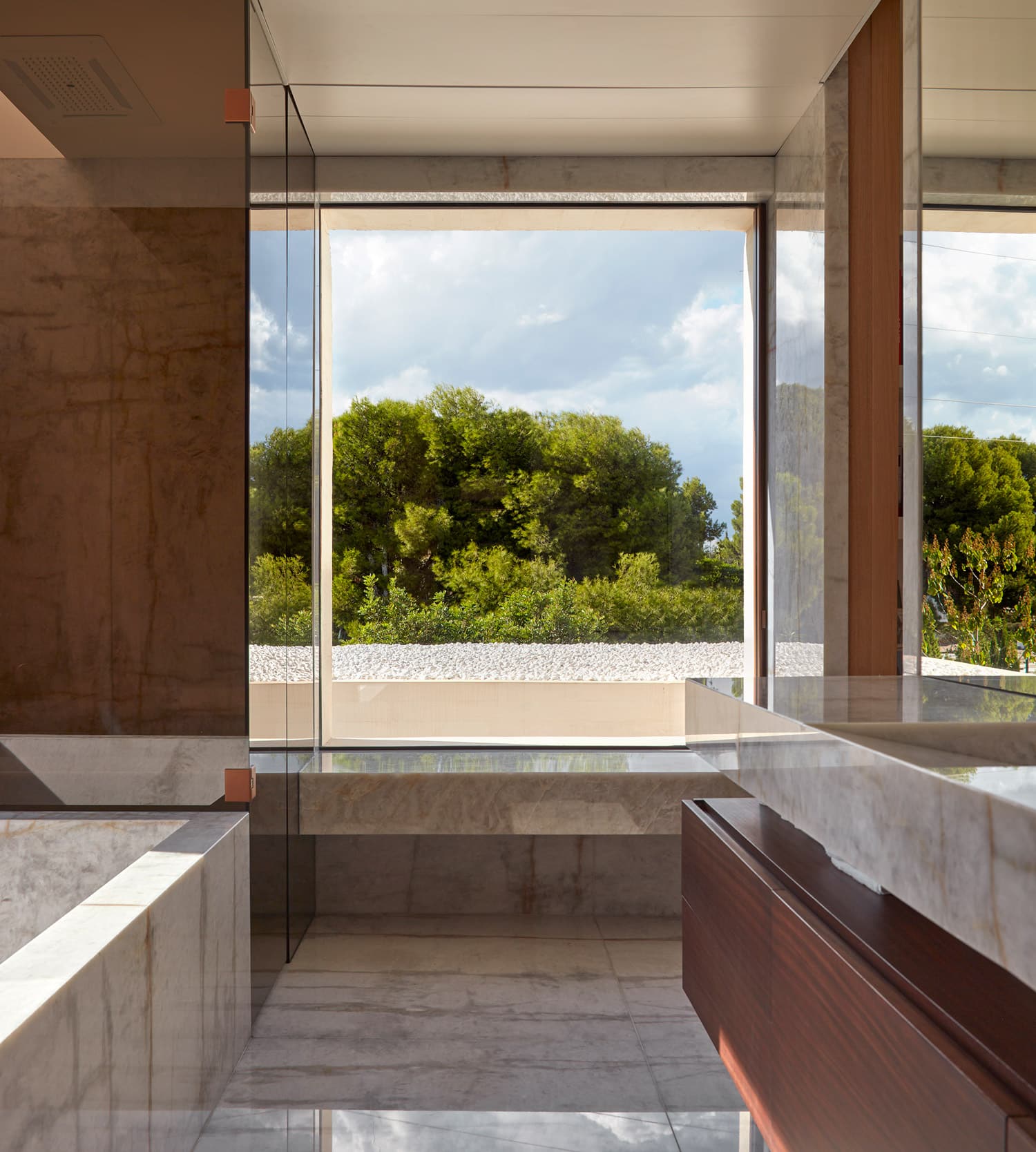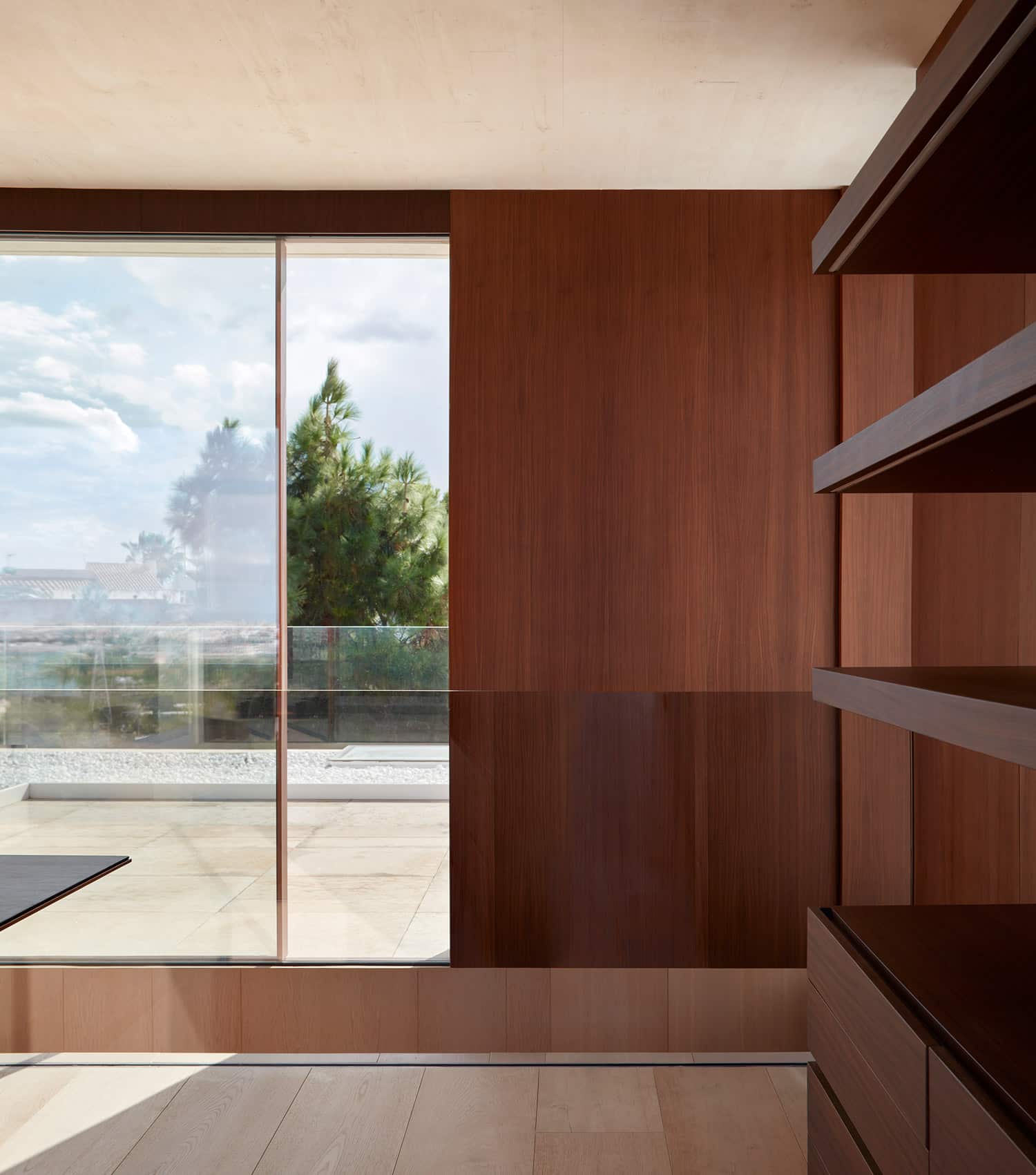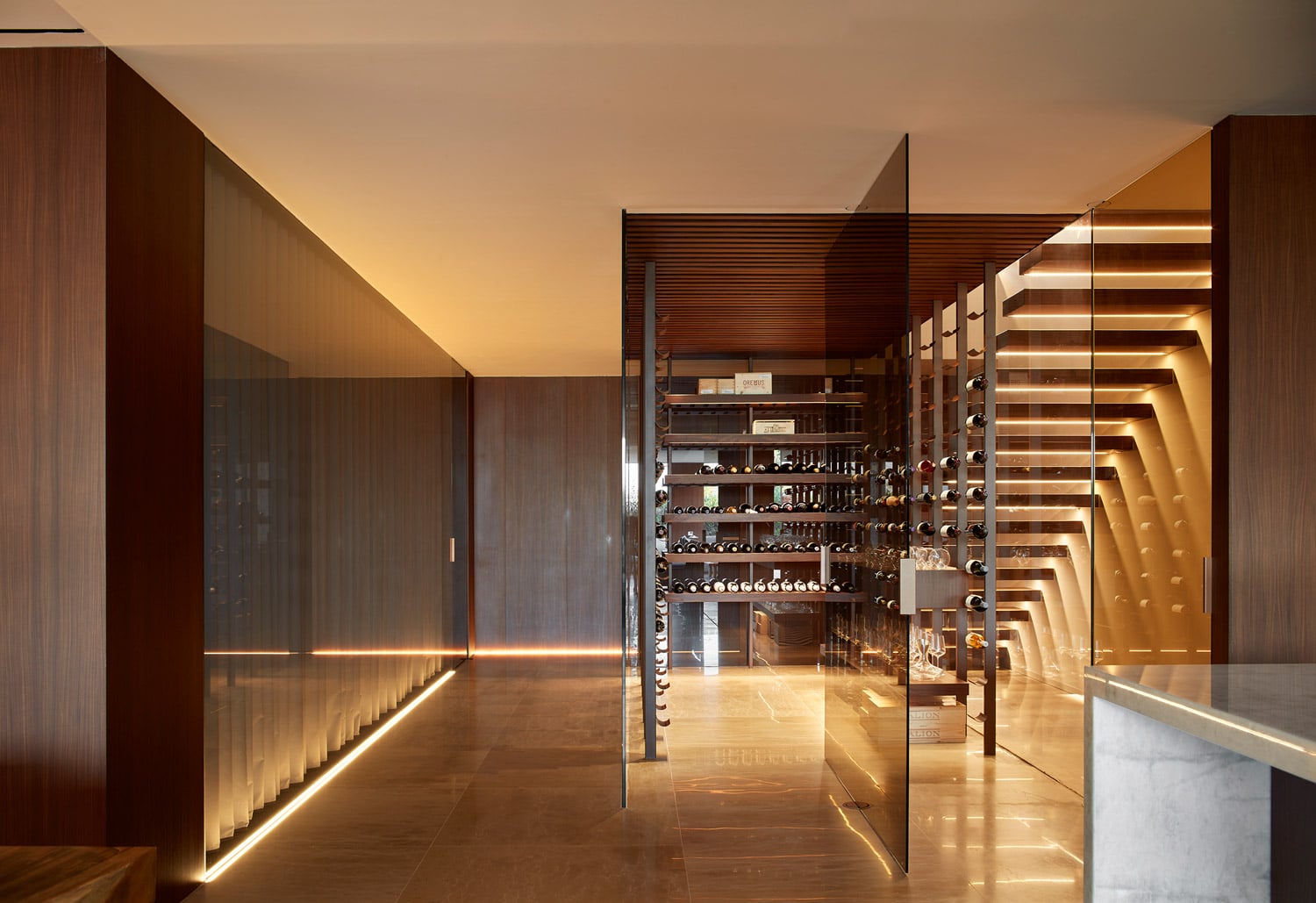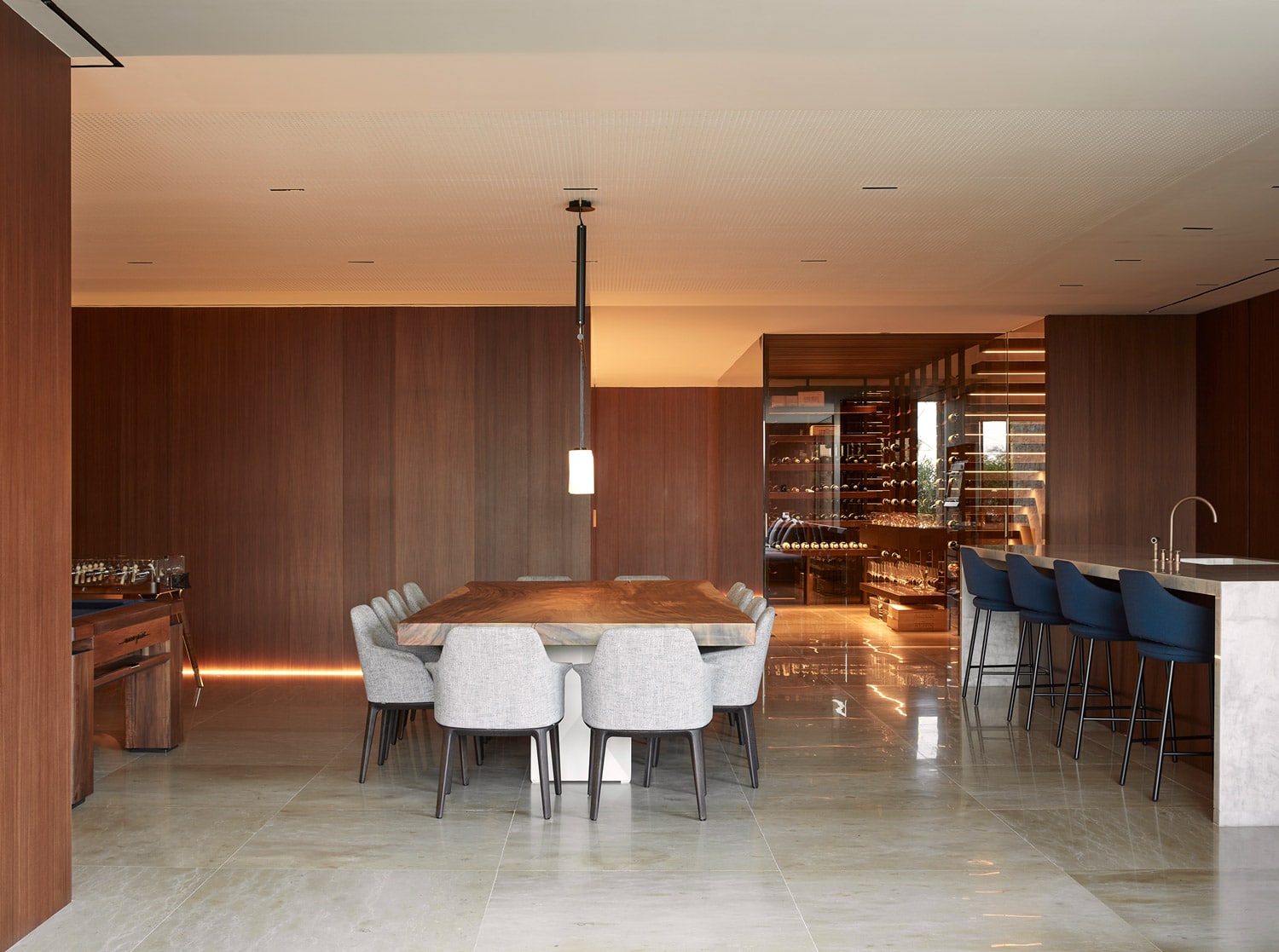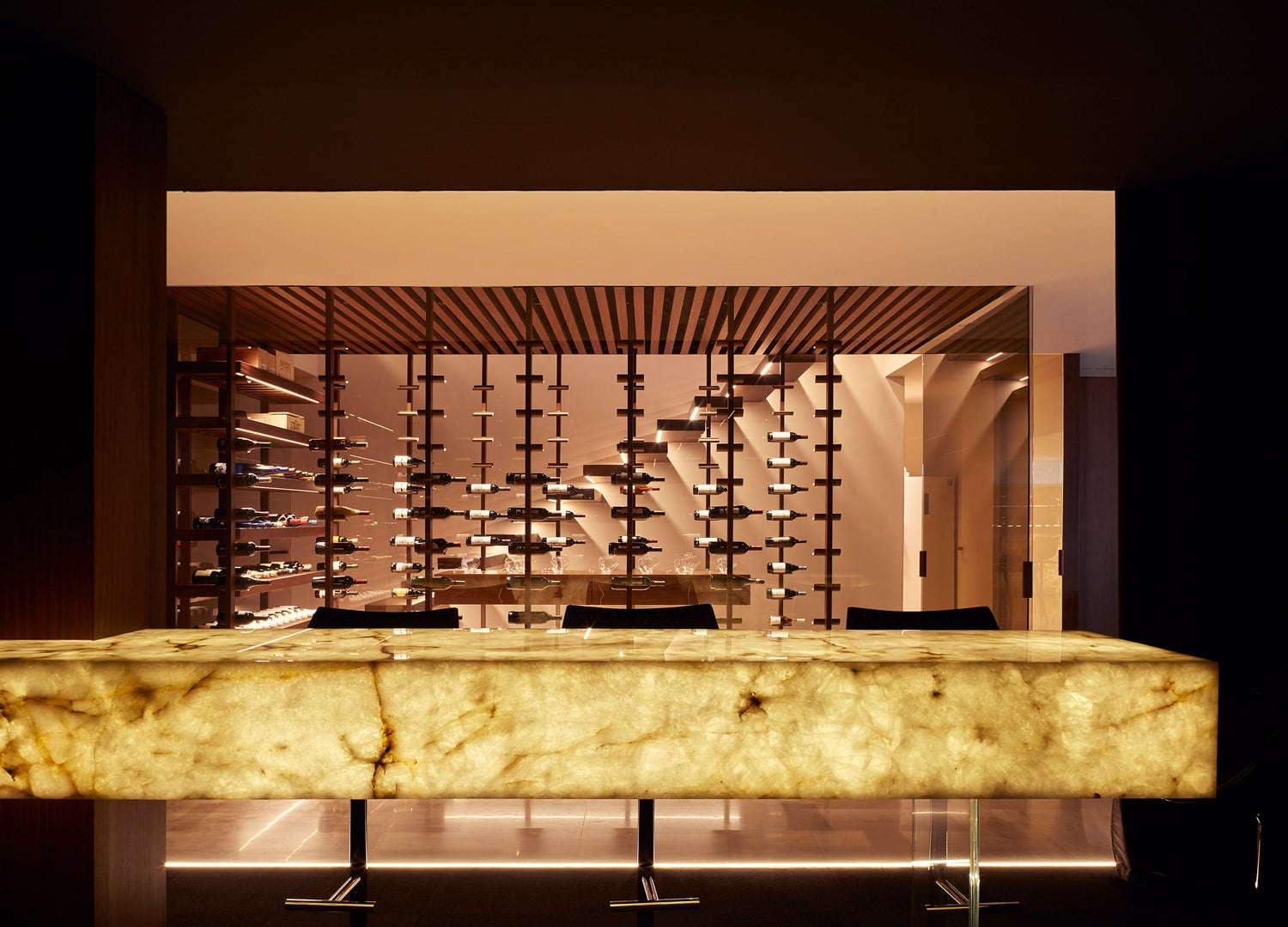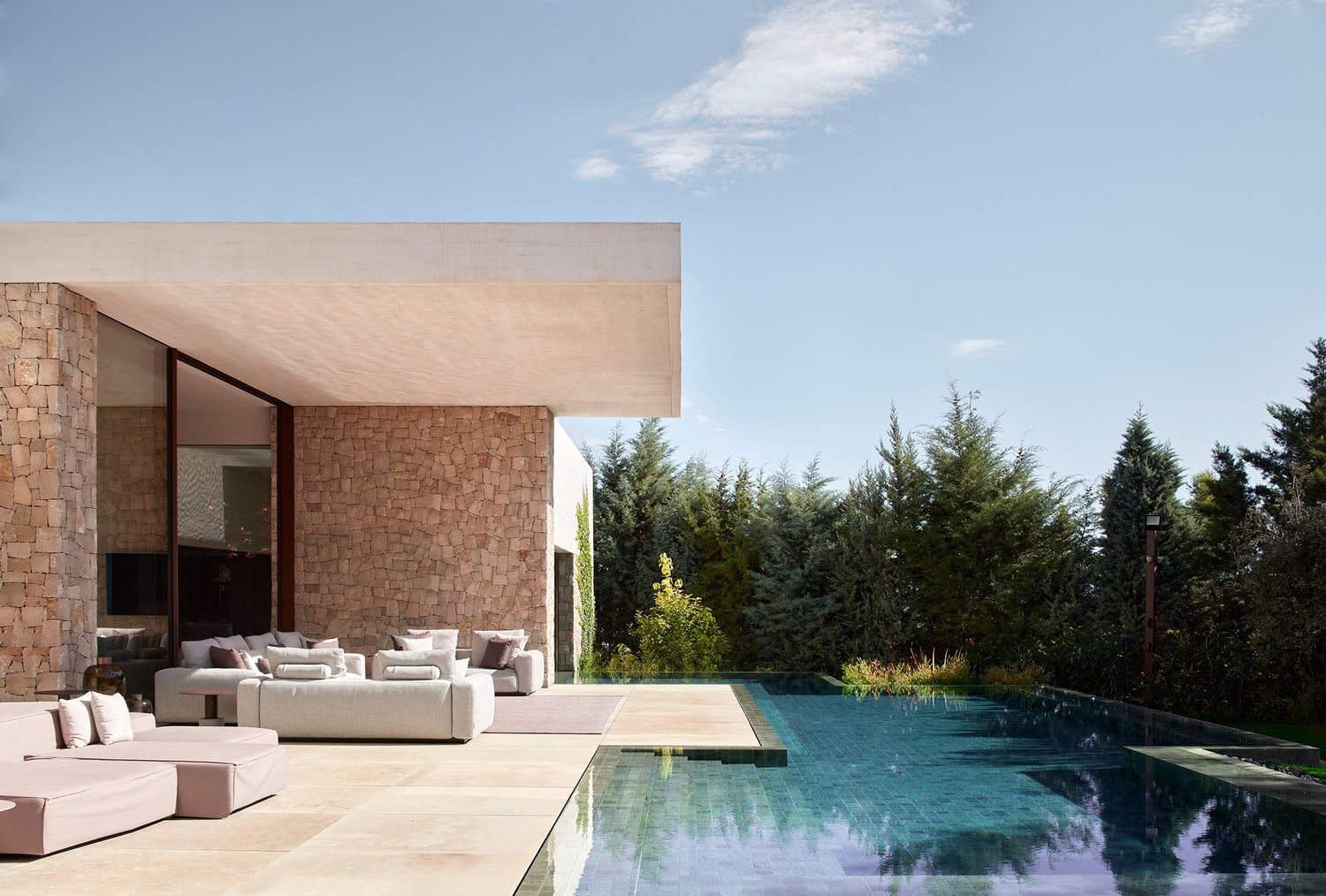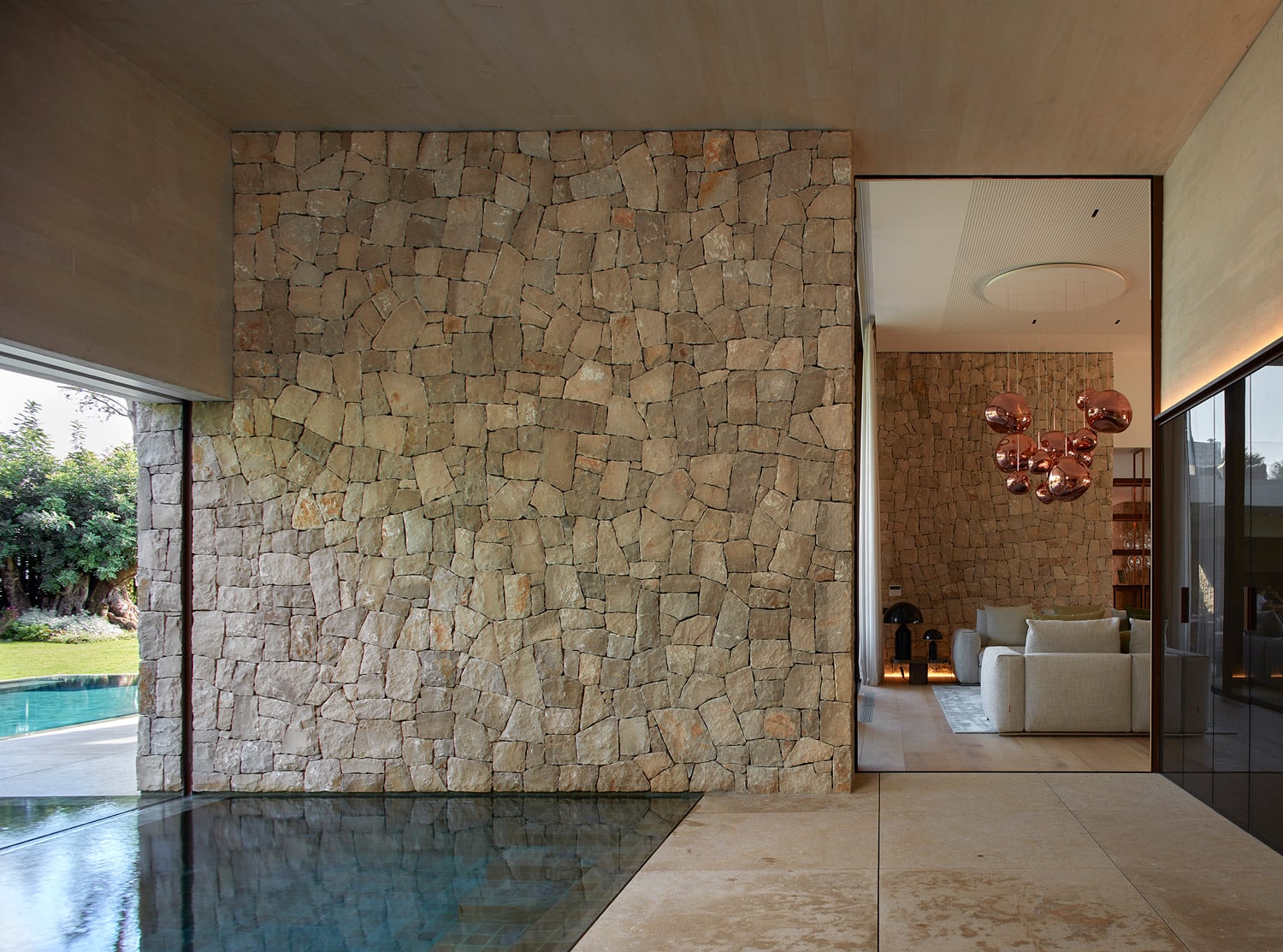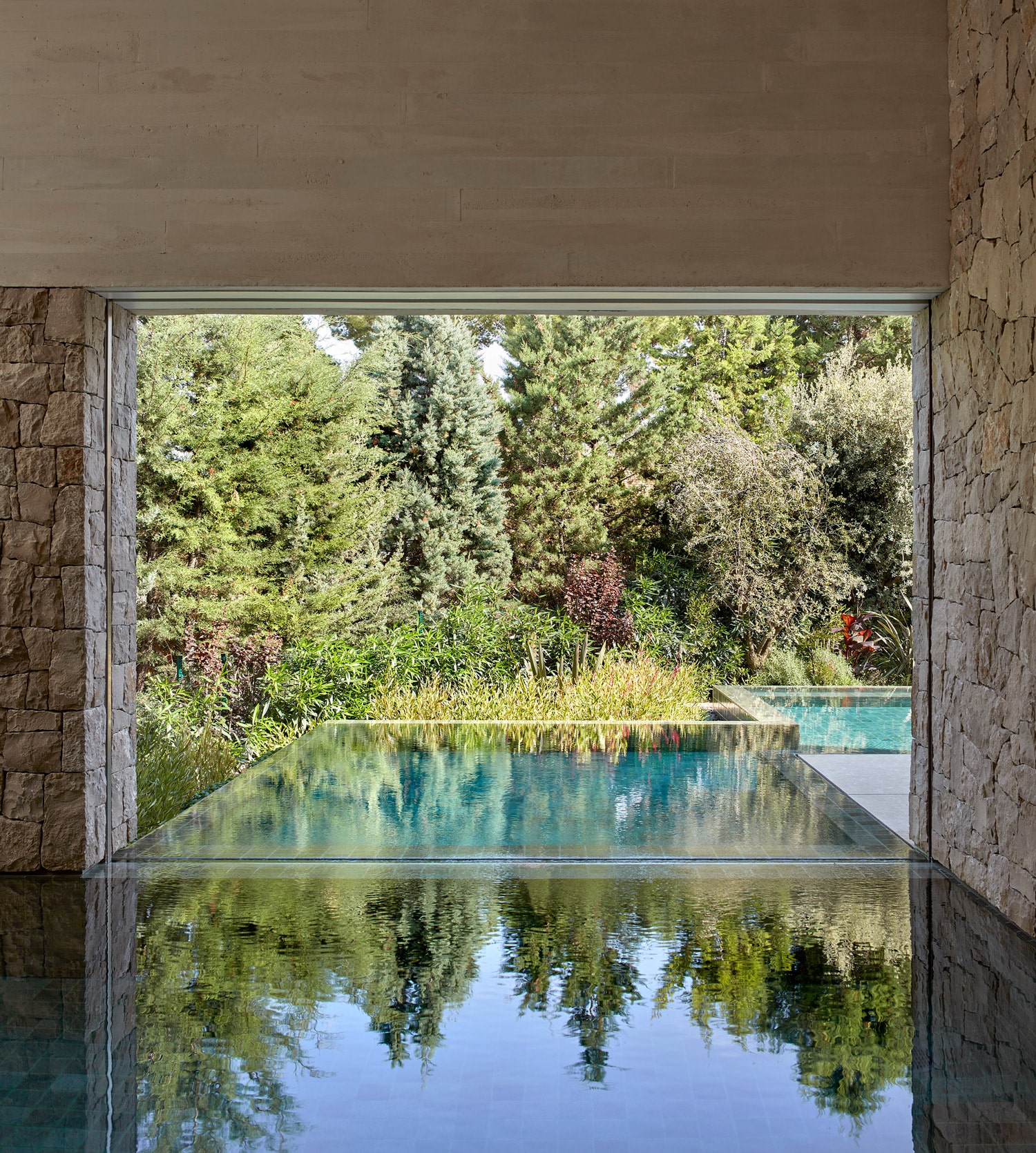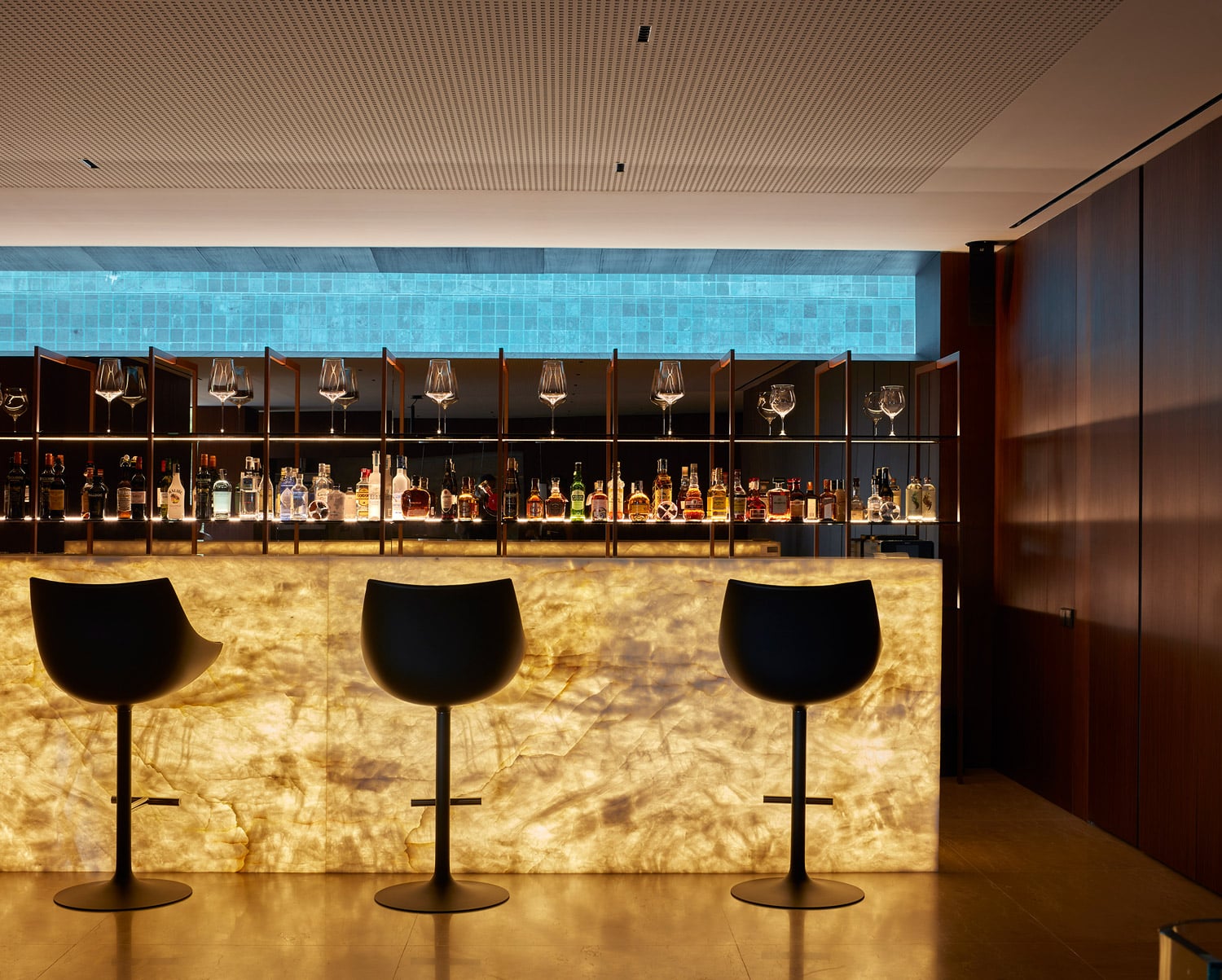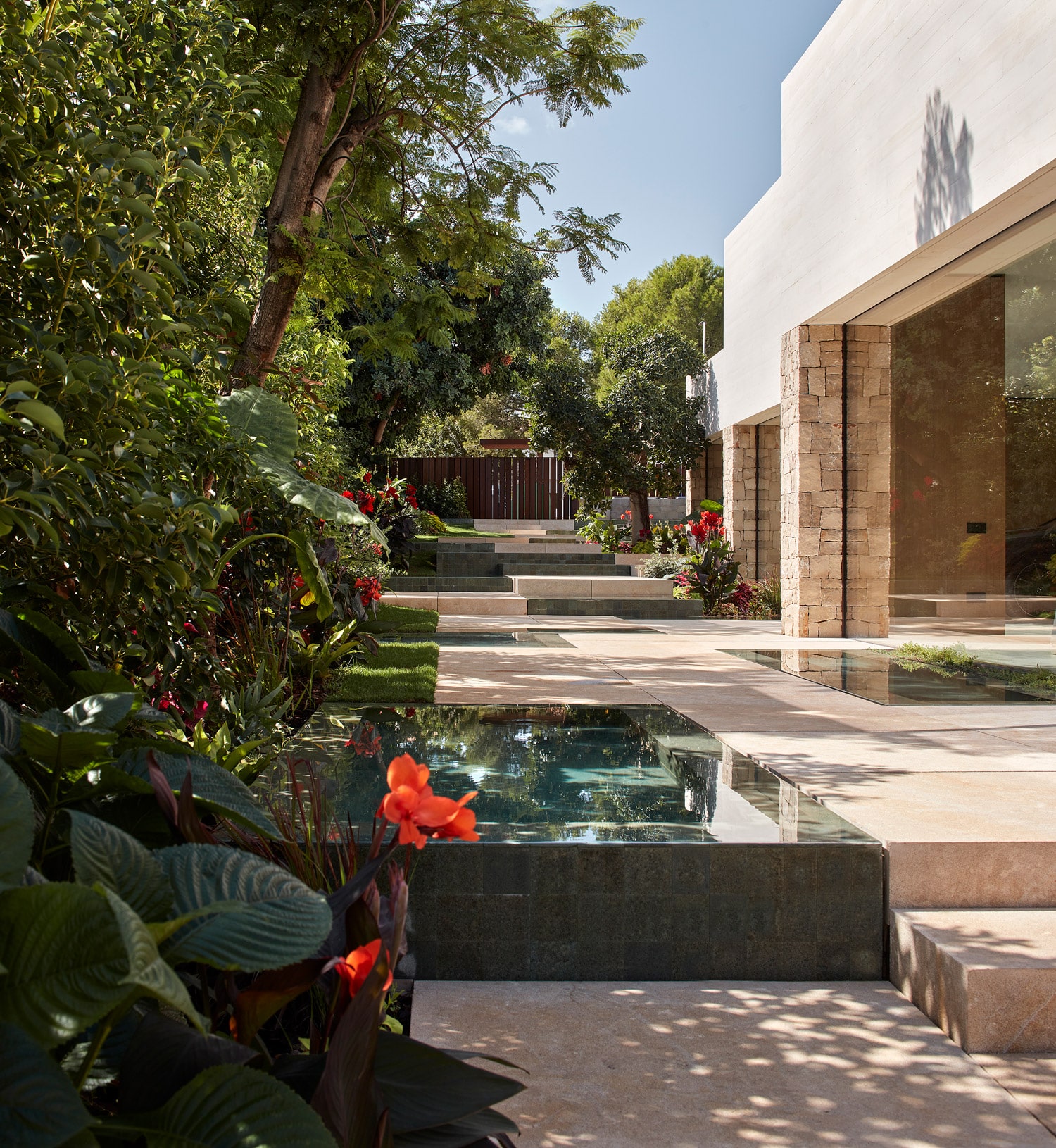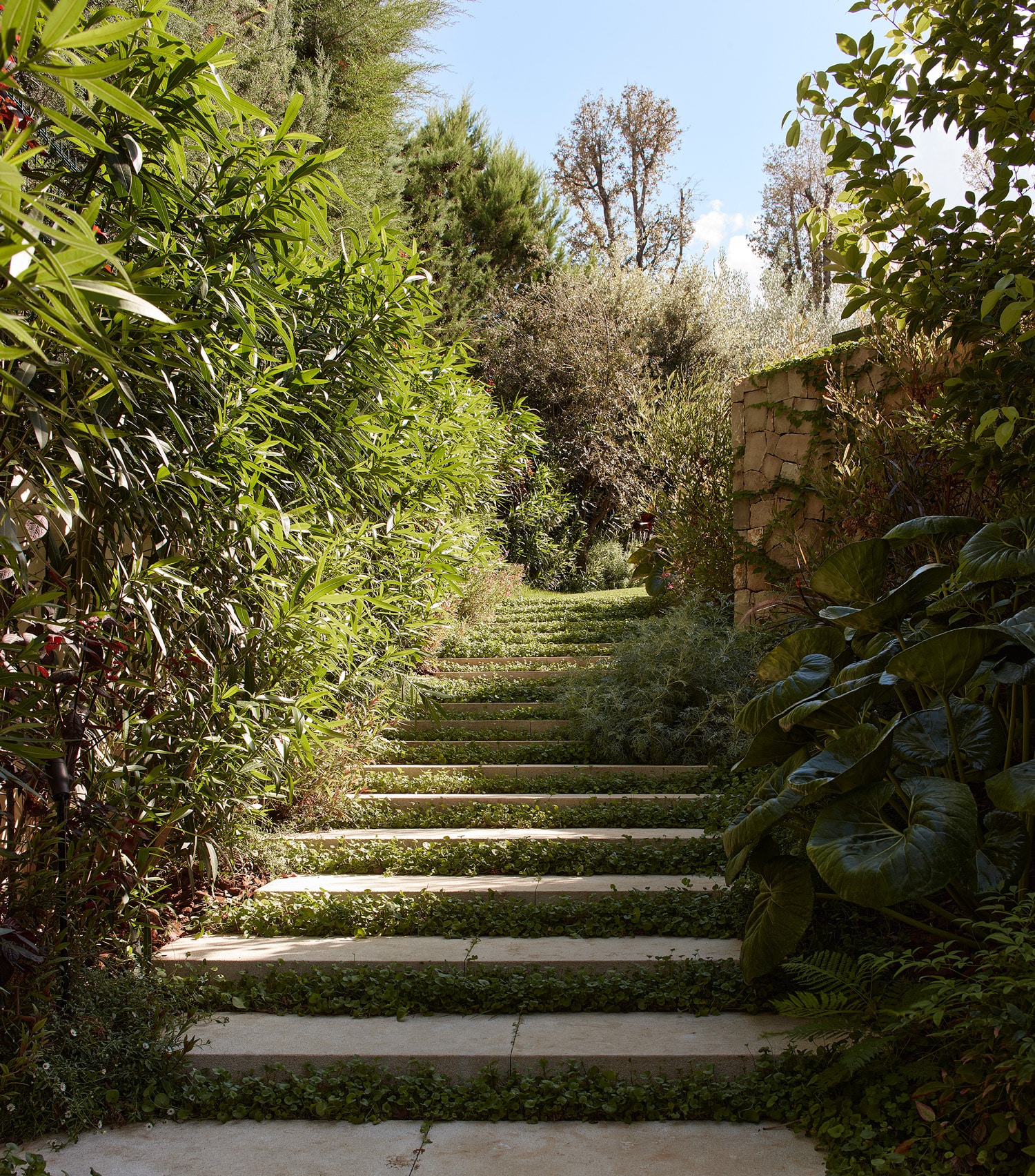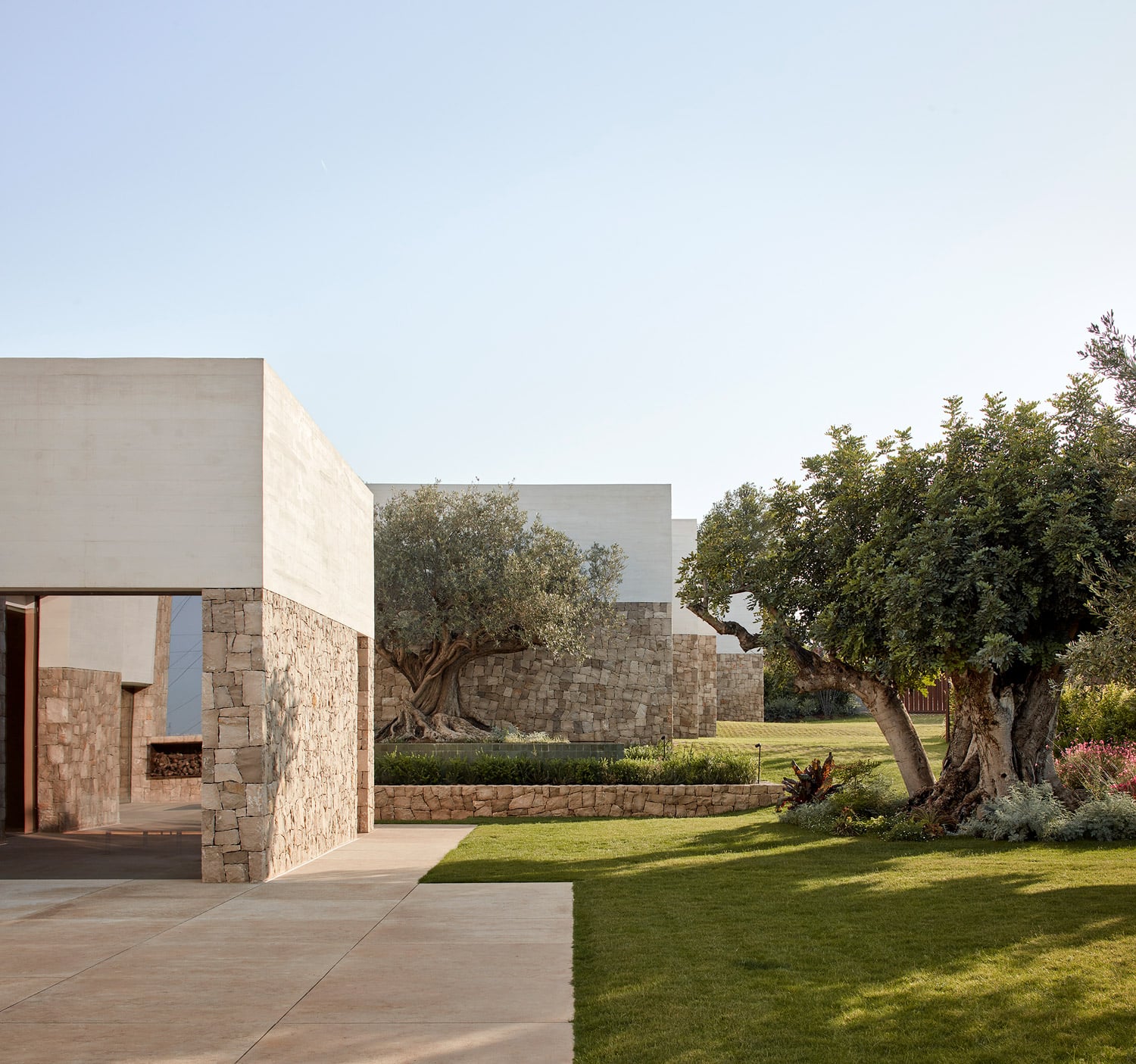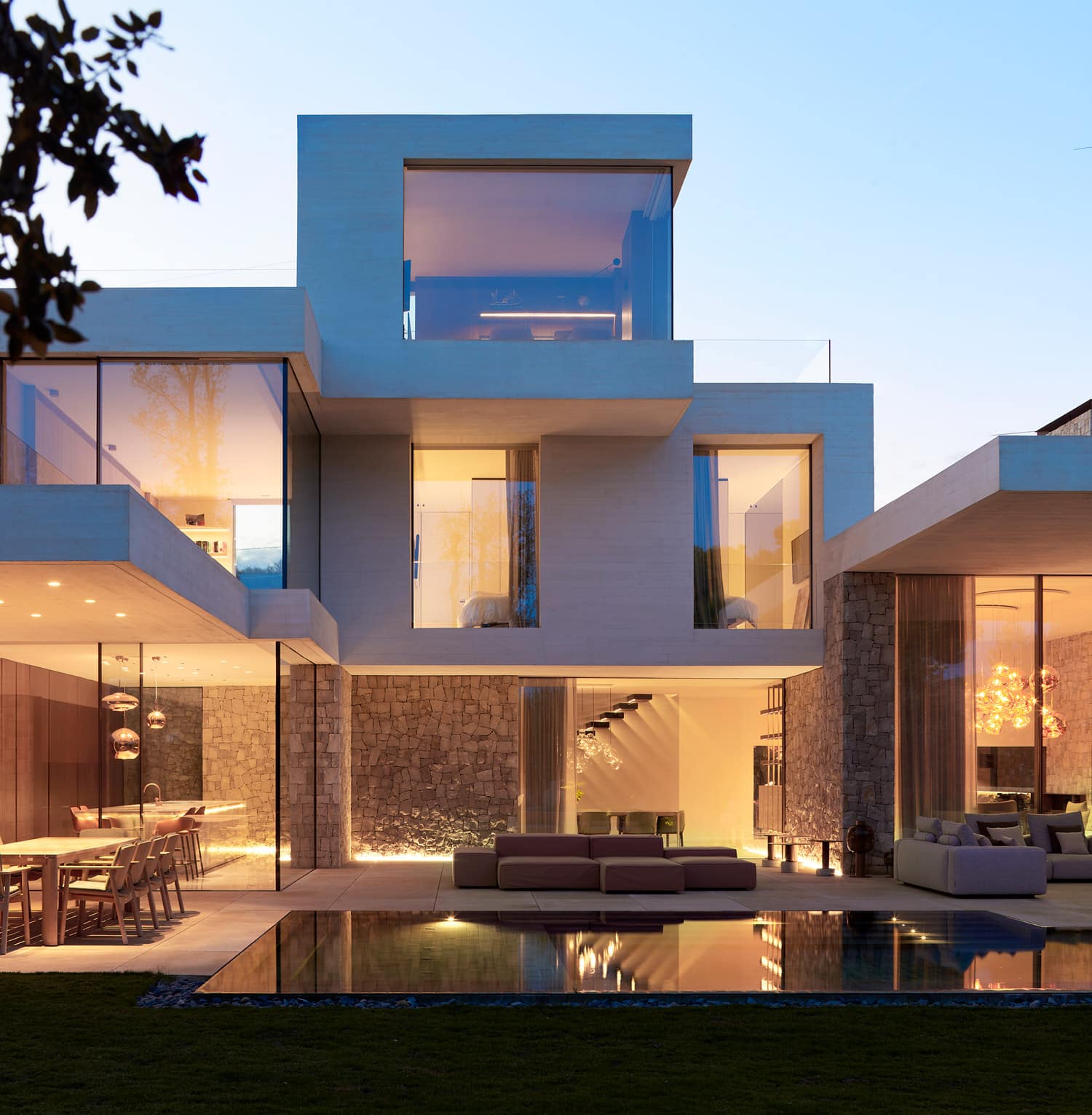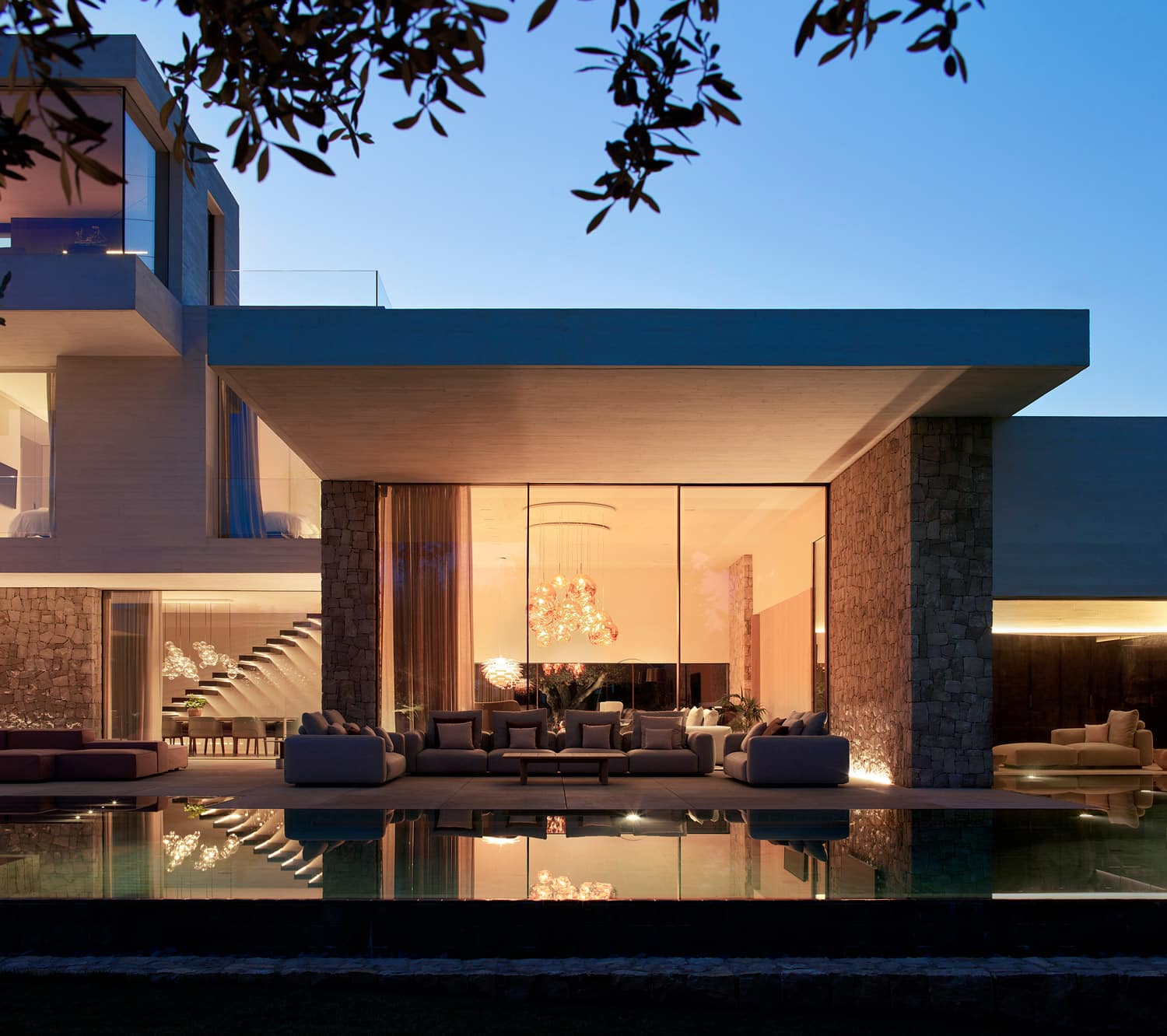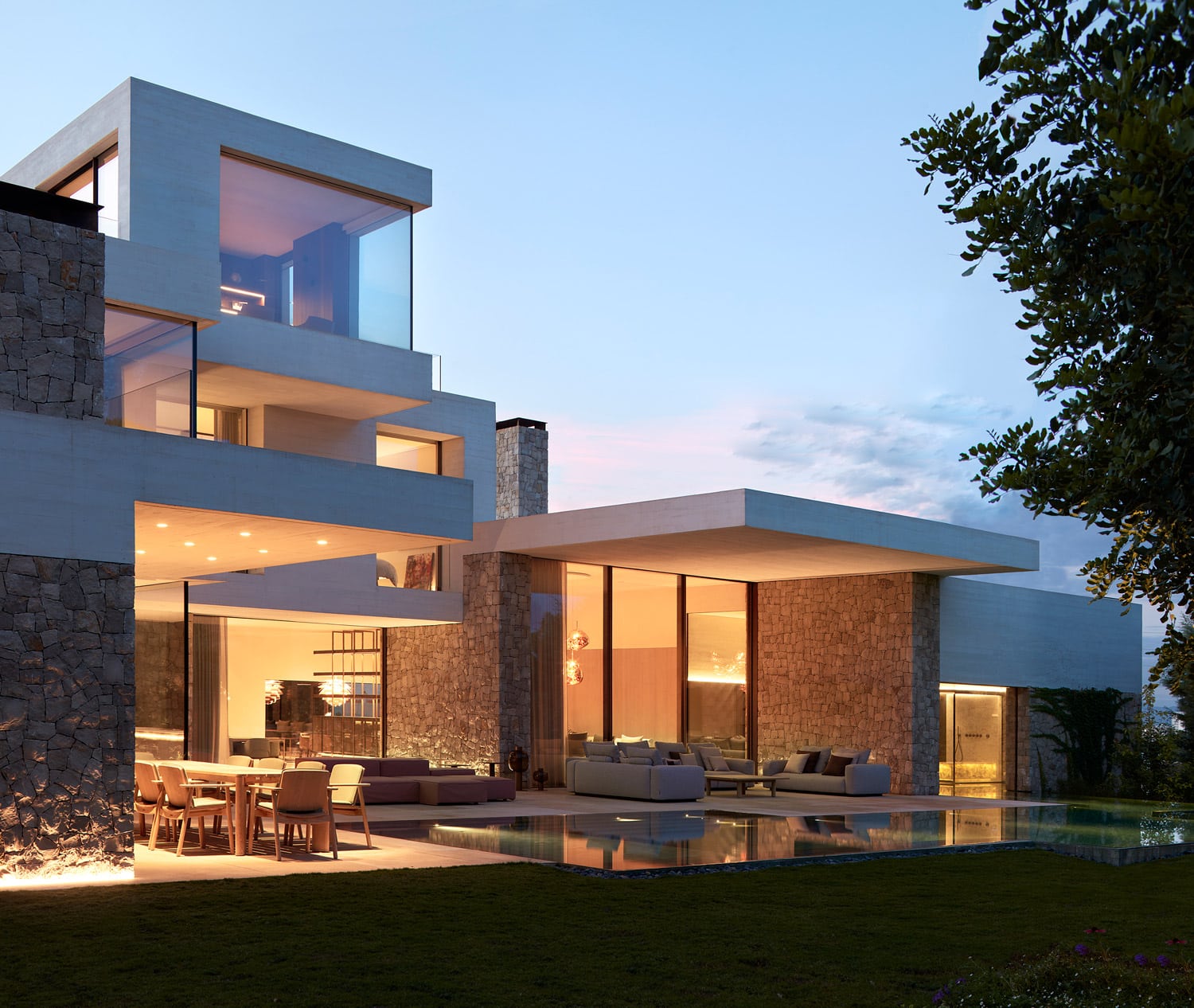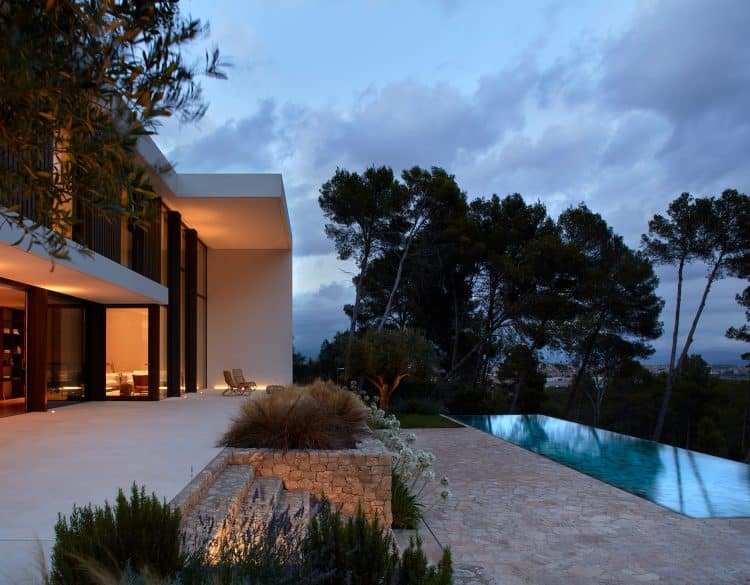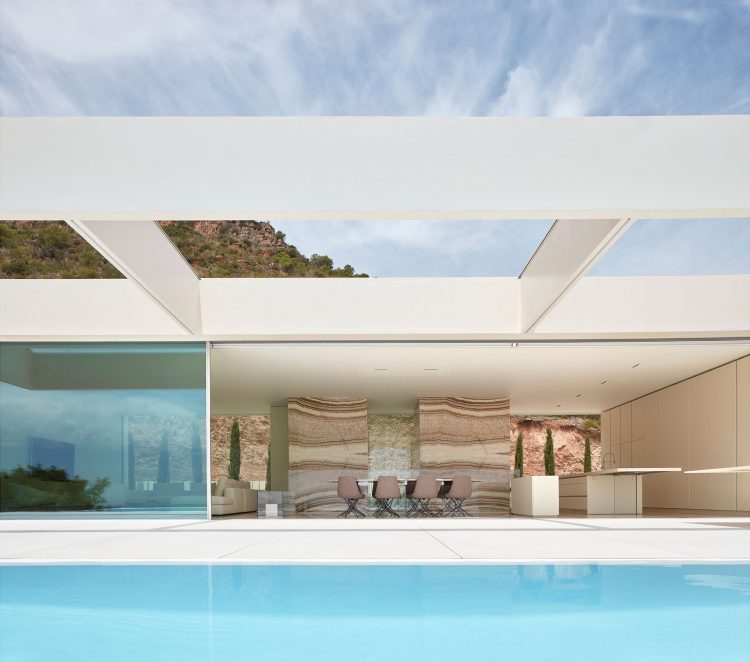Valencia, Spain 2021 area. 985 m²
Located in a consolidated housing estate near Valencia, Olea House starts from some difficult geometry and constraints, particularly the narrow façade available on the plot. Its design is based on the breaking of the volume of the house and the generation of several pieces that seek to suit those initial handicaps.
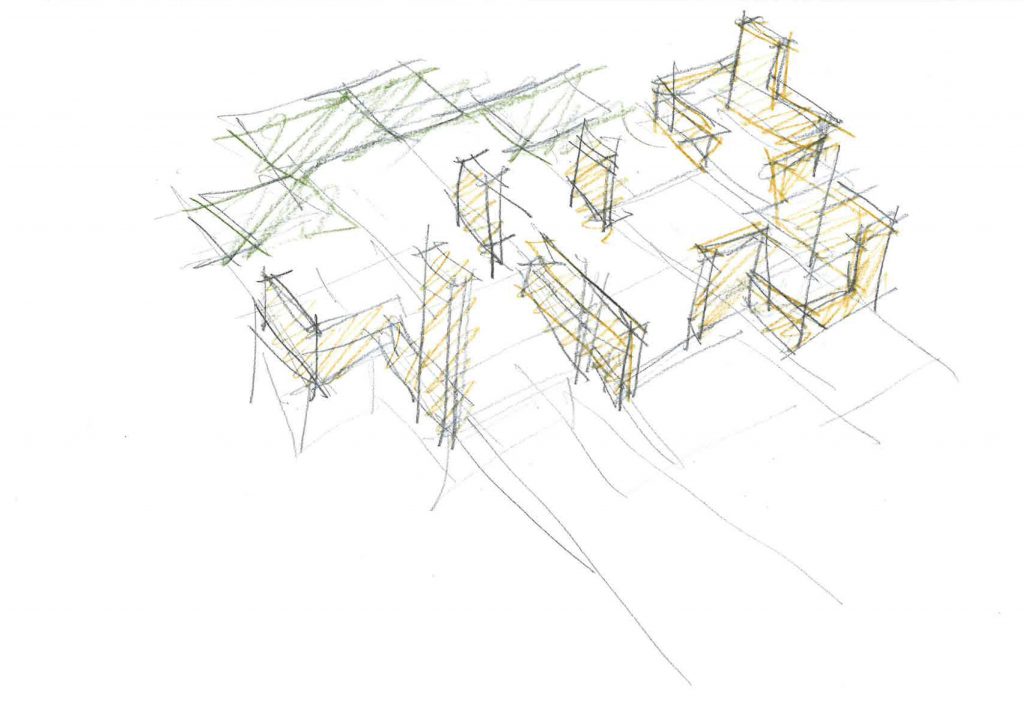
The house recalls the local vernacular architecture by adapting the stone plinths of the nearby dwellings. The different pieces of the house have a stonework plinth that is higher or lower depending on the proportions of the piece and its openings.
Each piece protrudes out of the attached one in order to articulate a layout that try to generate different views of the garden and set spatial and visual links between them. Their height depends on the use of the room that they host. The set is topped by a lookout piece that opens to the distant views of the city.
A fluid and varying interior is generated by this play on composition, thus providing a different perception of each room caused by the variation of the proportions of the pieces and openings. The openings are sized and placed according to the sights that they aim to, while the façades are thoroughly designed for creating a balanced composition that integrates these various openings and the duality of materials.
The interior materiality contrasts with the exterior for its polished and sophisticated character and each element is designed and worked like a piece of jewelery.
The entrance to the house is planned as a route that combines a smooth natural stone staircase with sheets of water that absorb the unevenness of the plot. This access path is flanked by a lush garden of wild character with huge ficus that hang down their roots. A descent accompanied by the sound of calm water.
The ground floor hosts the rooms for daily use as kitchen, dining room and double-height living room, to which are attached a guests’ pavilion, a cinema room and an indoor pool. The bedrooms and the lookout, dedicated to studio area, are hosted by the first floor.
Water is an important element here, thus linking the indoor and outdoor pool with the rooms. A sliding window that is hidden by a wall when it is opened becomes the link between them, thus enhancing their continuity. The slot on the swimming pool allows the access of natural light to the basement and projects the reflections on the water.
At Casa Olea there is a landscape in itself composed of three scenes. A Mediterranean garden, with centenary olive trees that twist their trunks to warmly embrace. Mediterranean essence interpreted towards a colorful and sensory garden. Formally, it creates a plant barrier capable of separating the house and generating its own unique space.
The stone plinth is topped by a white concrete trim, casted in such a way that the two materials form an expressive, complementary set that provides the house with a strong tectonic character
-
Architect
Ramón Esteve
-
Project Team
Estefanía Pérez
Jacobo Mompó
María Parra
Anna Boscà -
Technical Architect
Emilio Pérez
Carolina Tarazona -
REE Collaborators
Tudi Soriano
-
Ladscaping
GM Paisajistas
-
Extern Collaborators
Índigo Ingeniería
Prodein Ingeniería
IMG Windows
Carpintería Palmer -
Photography
Mariela Apolonio
-
Video
Alfonso Calza
